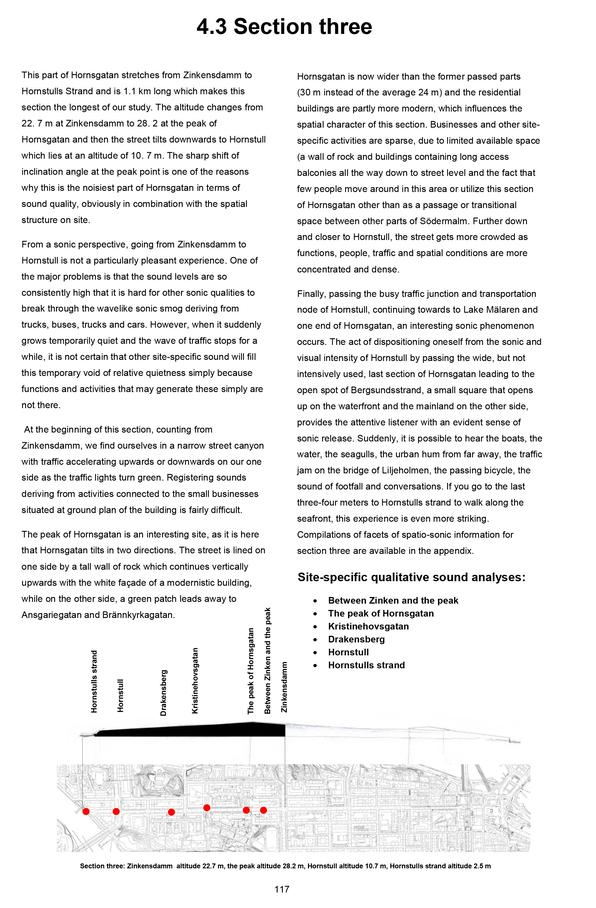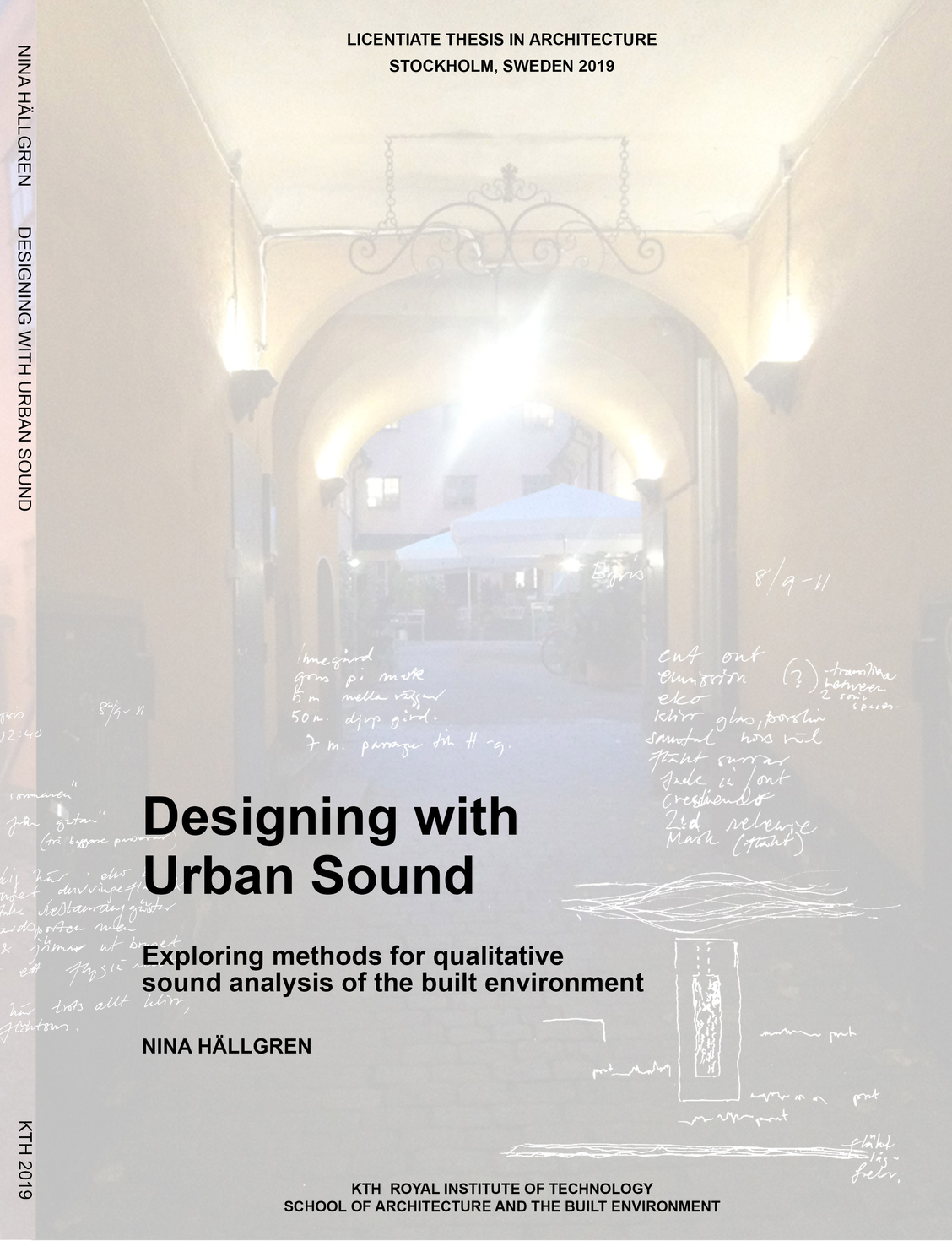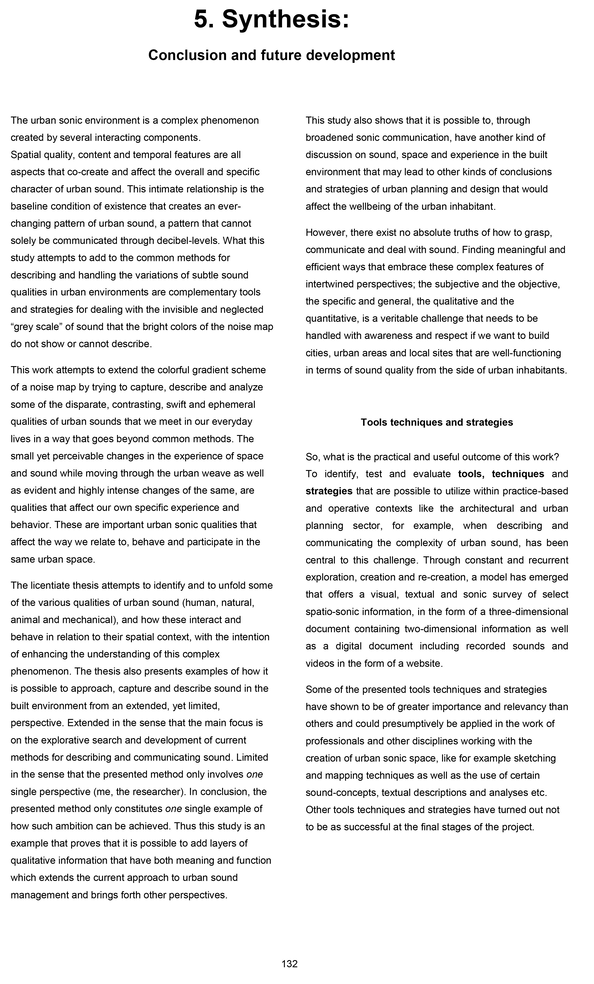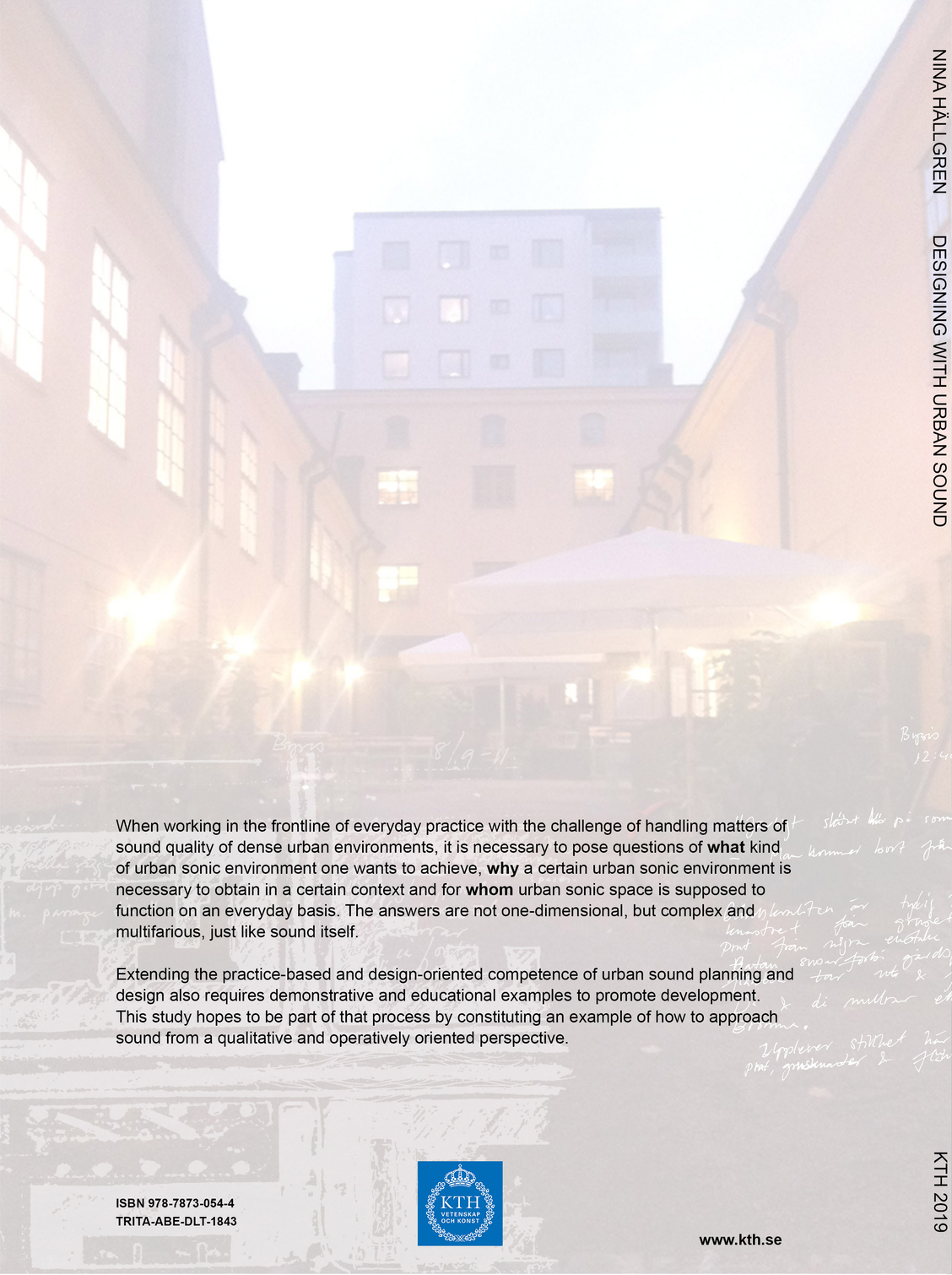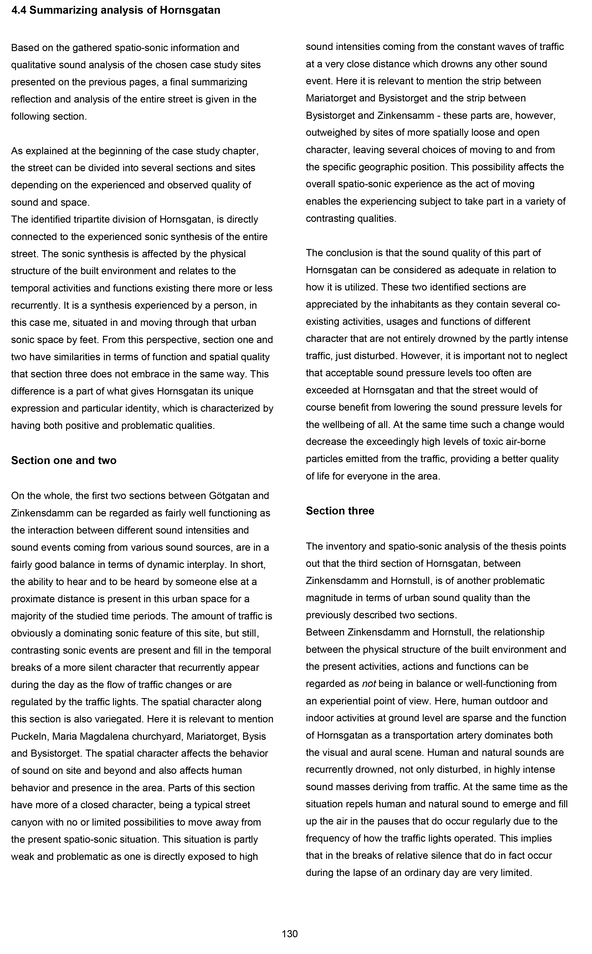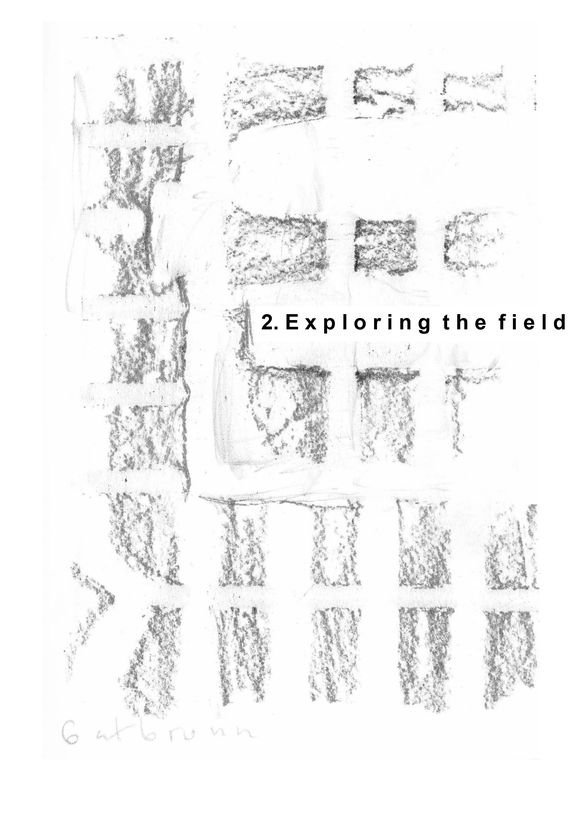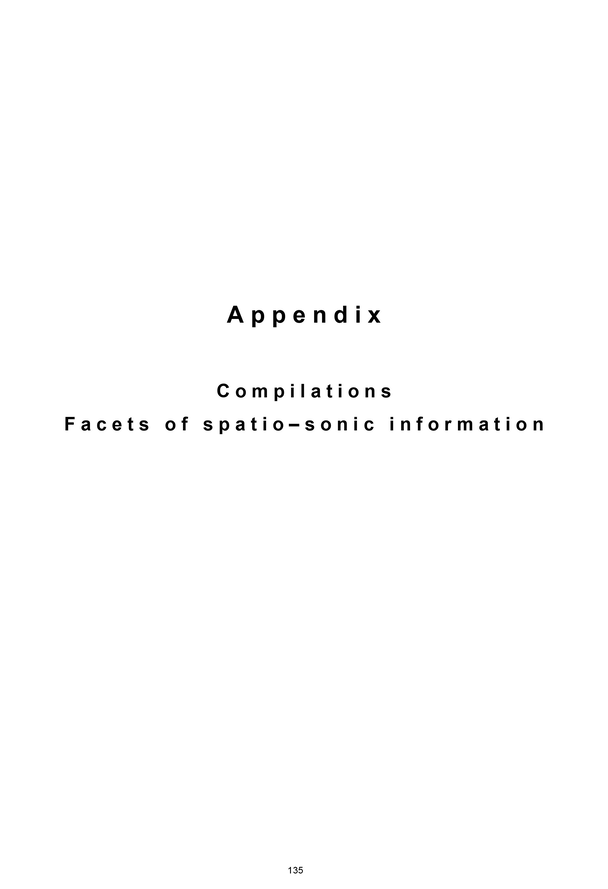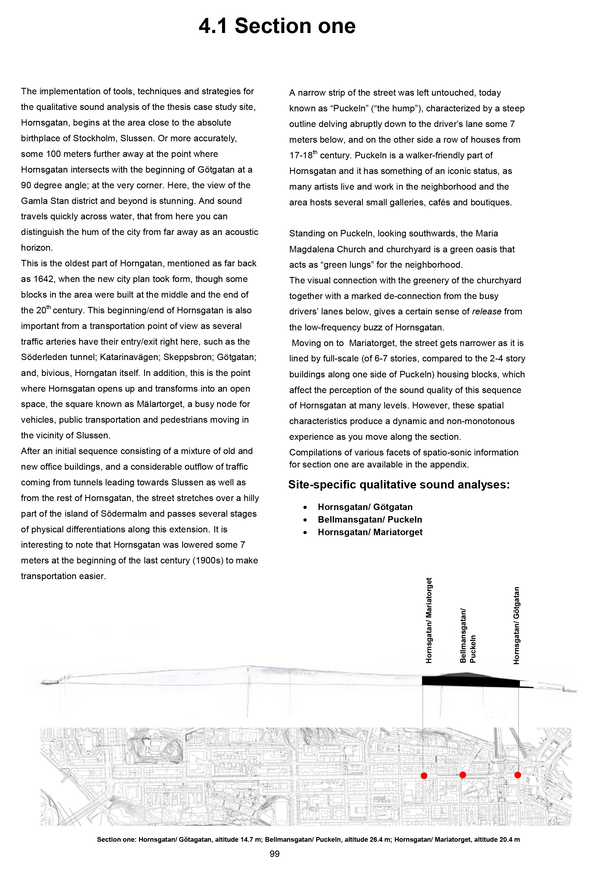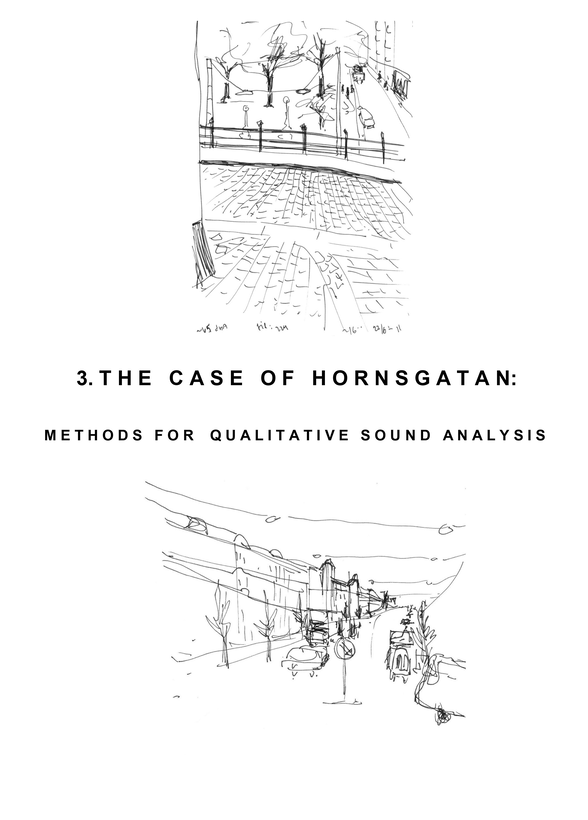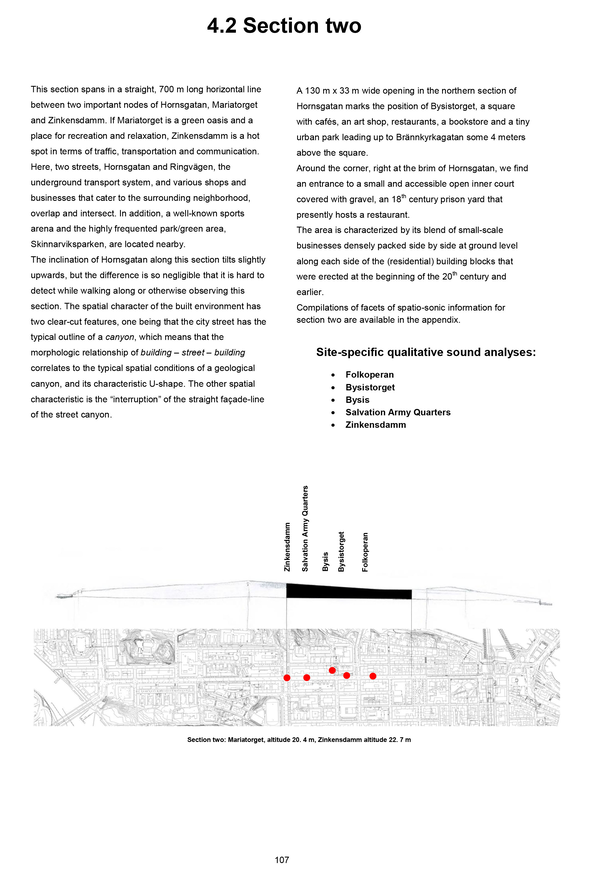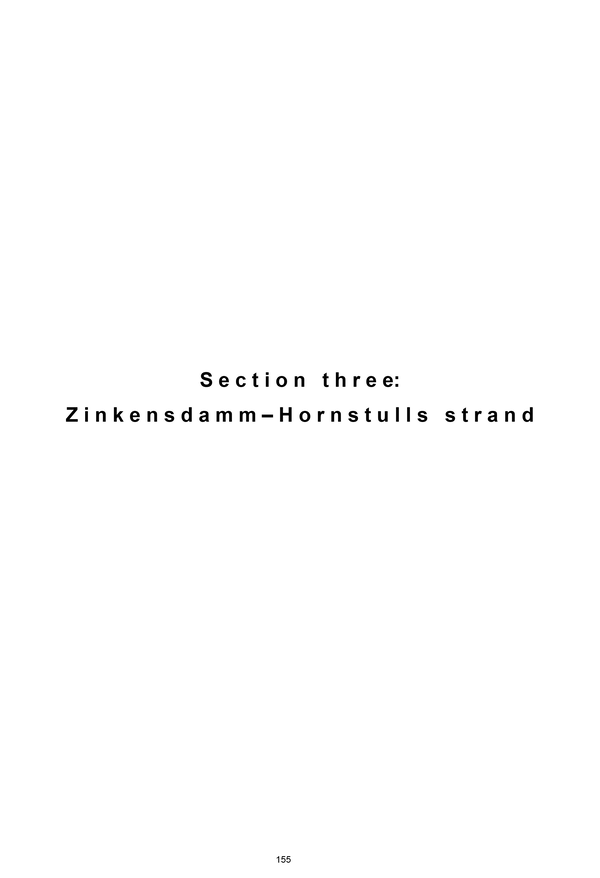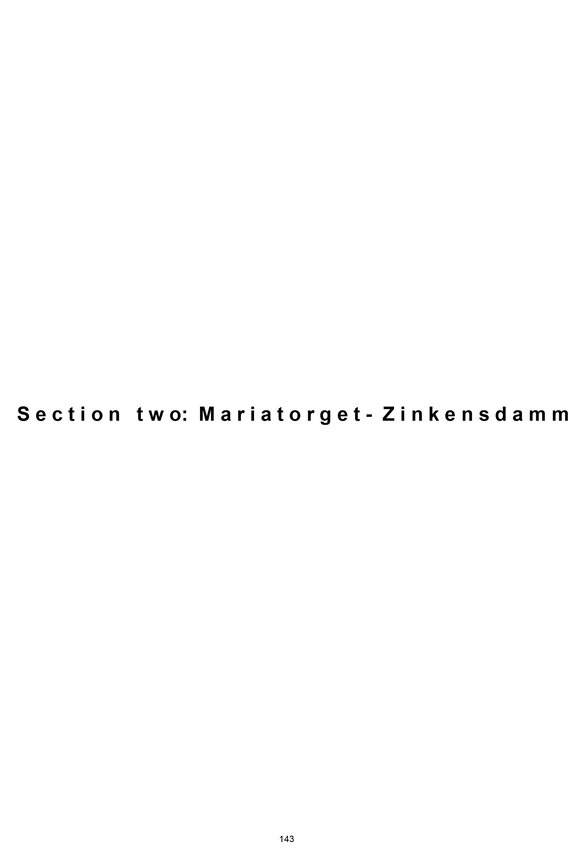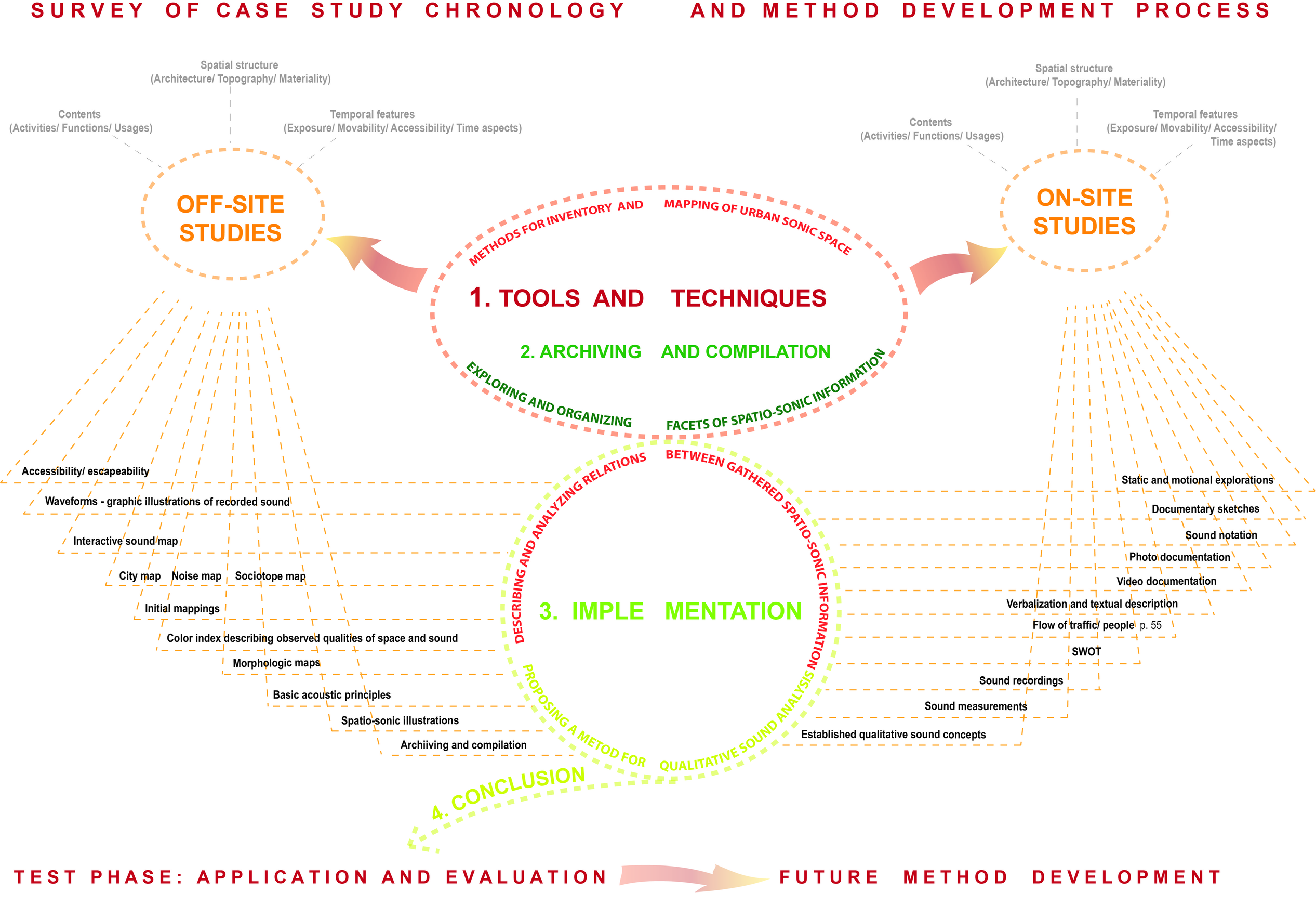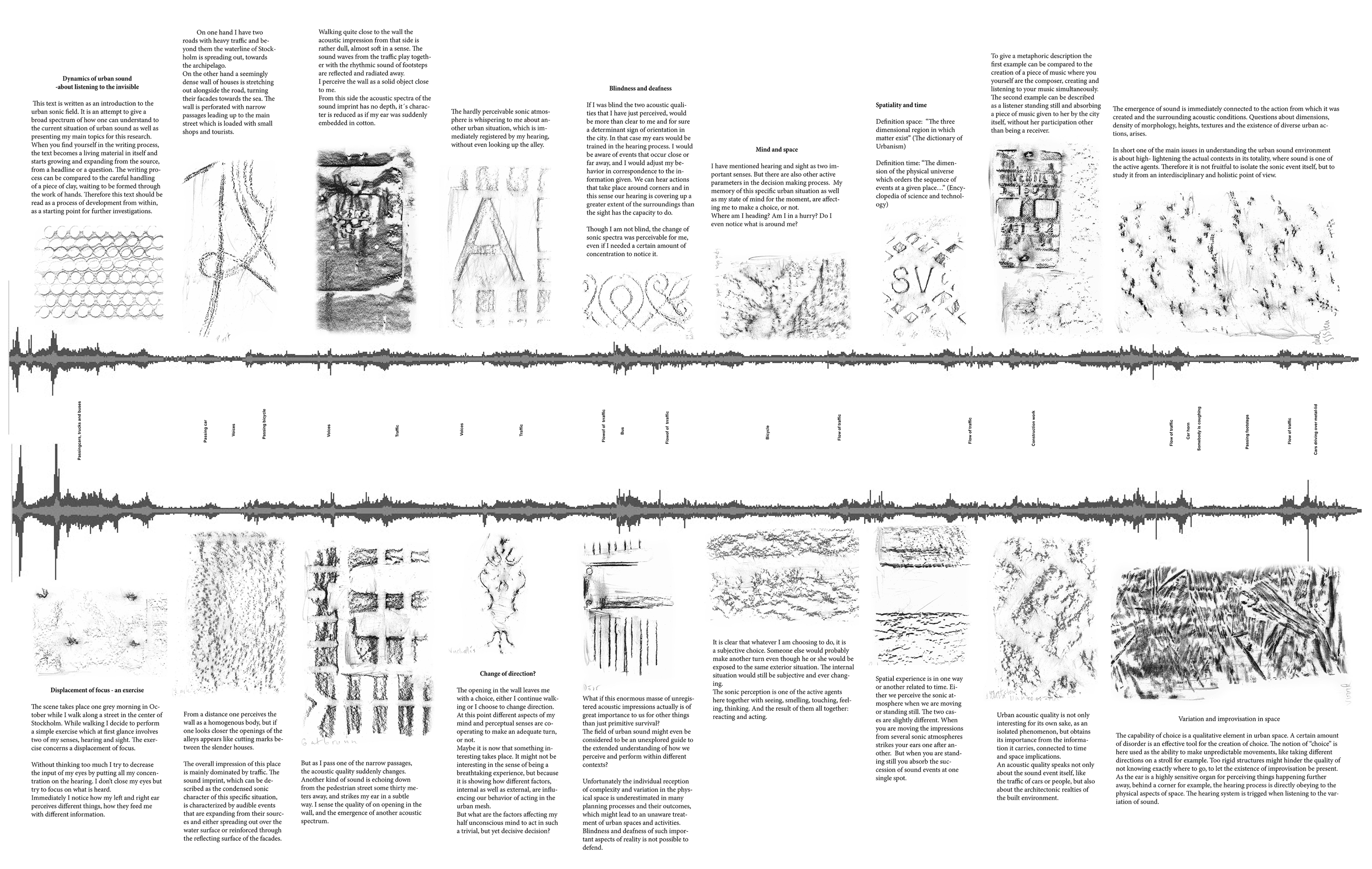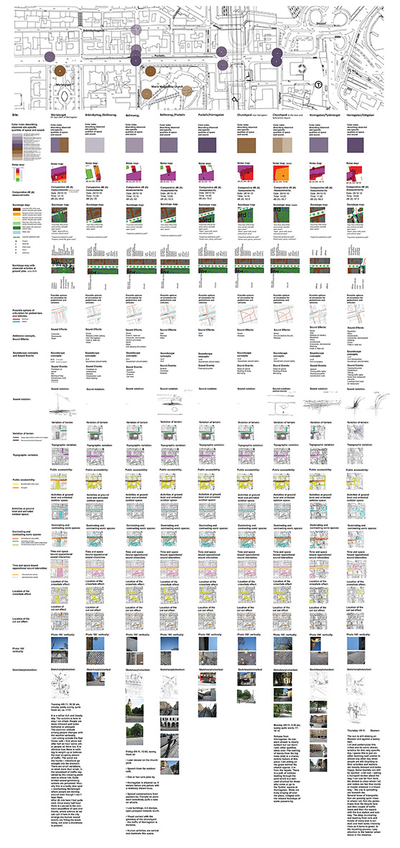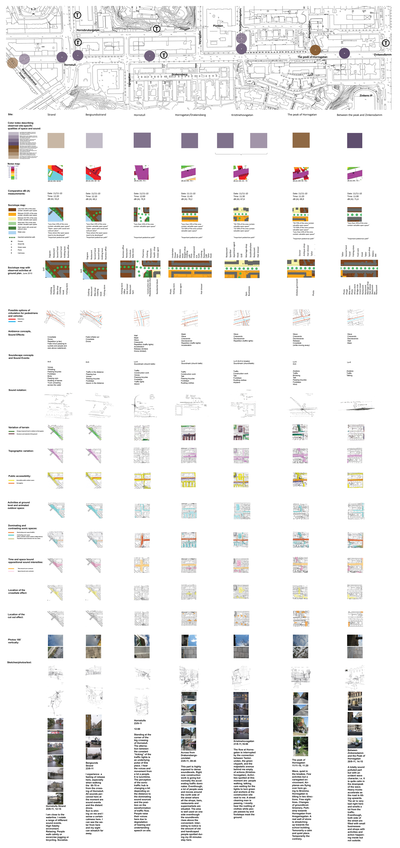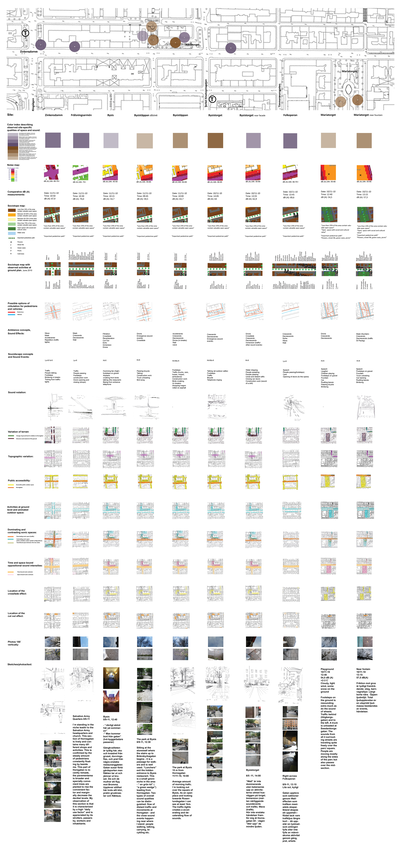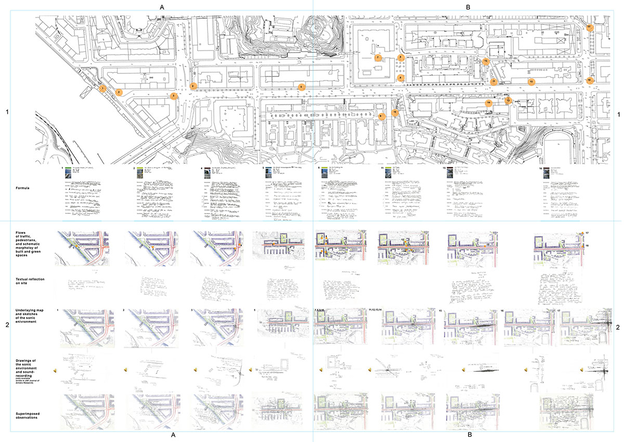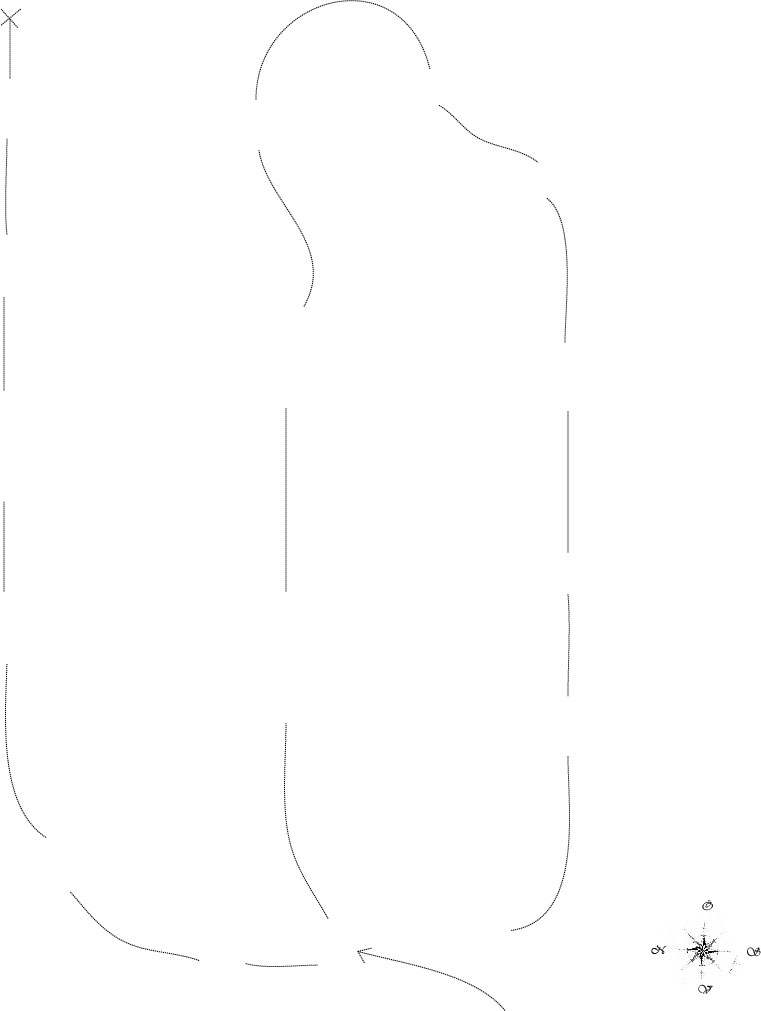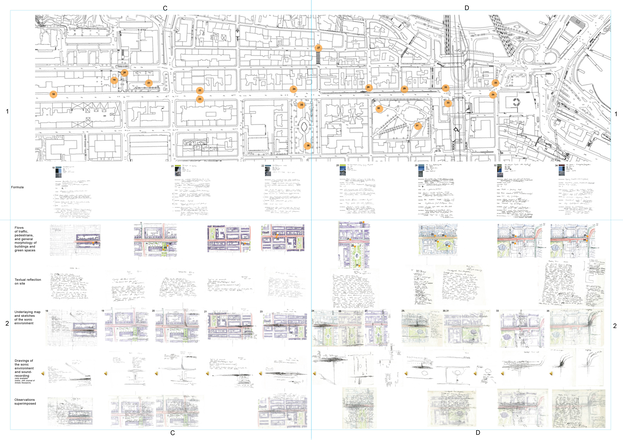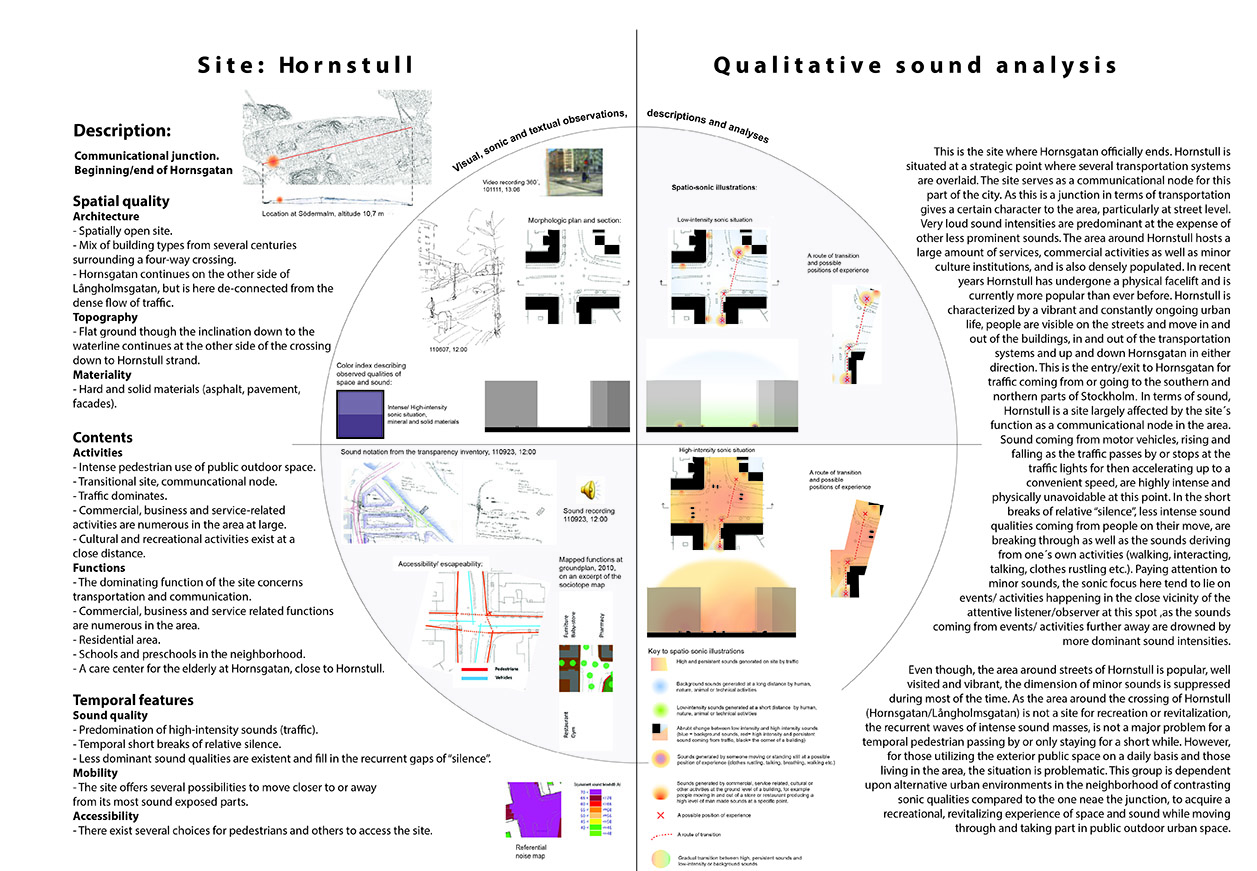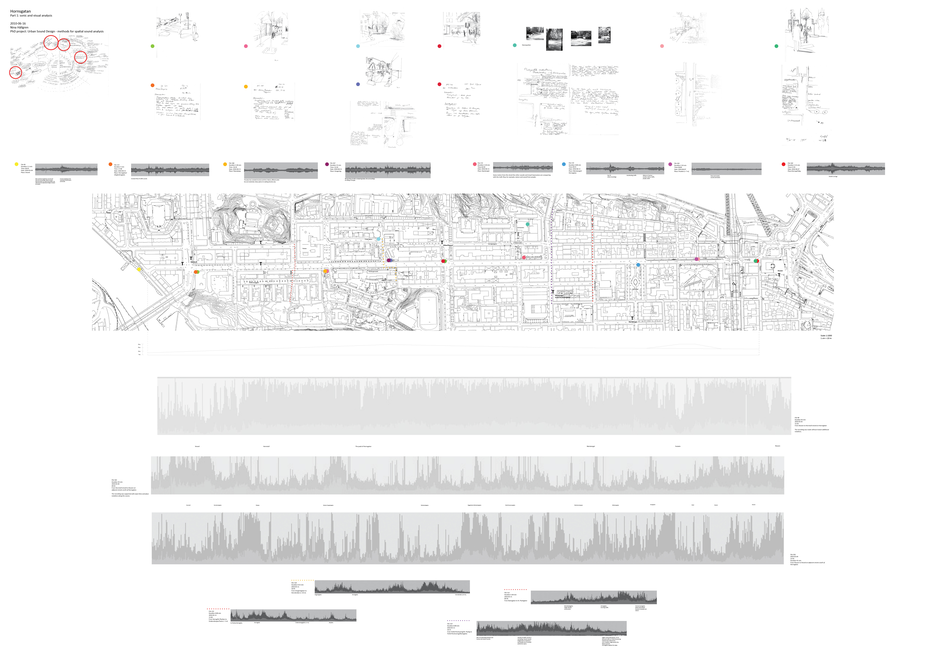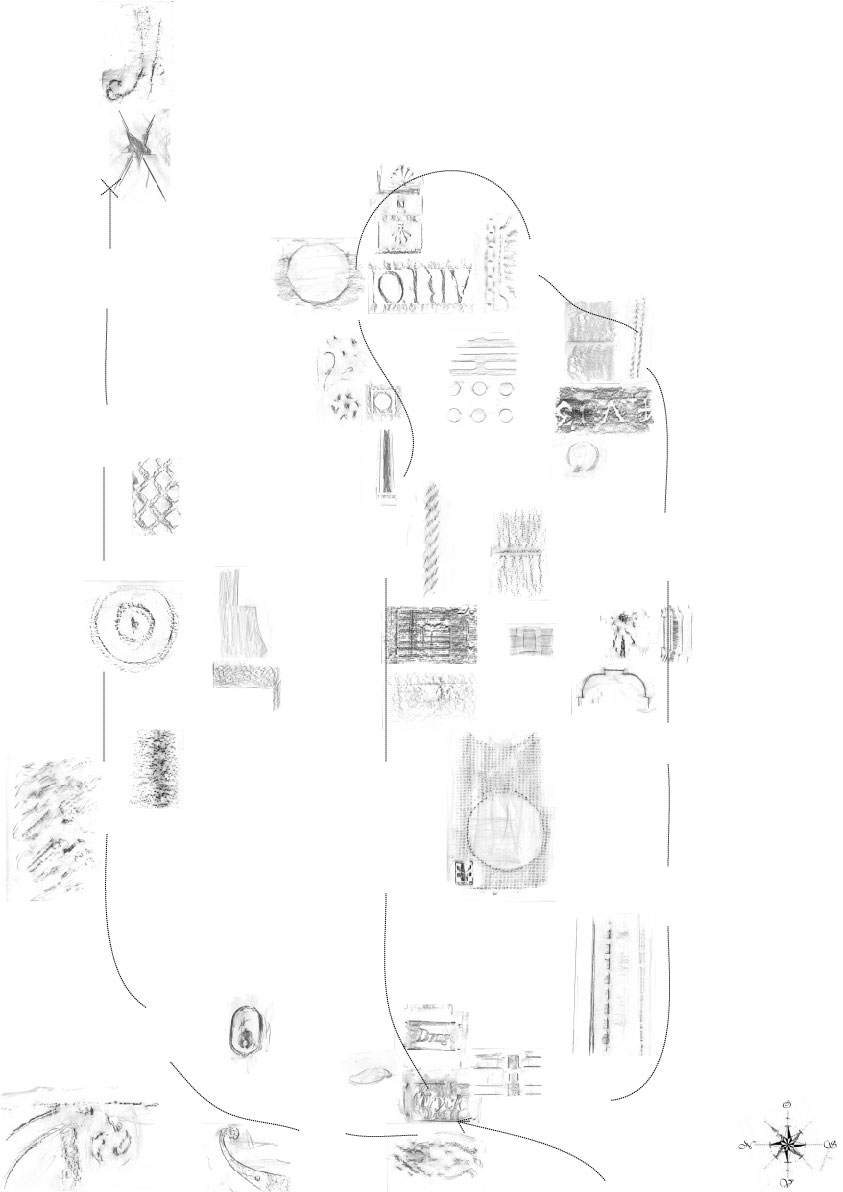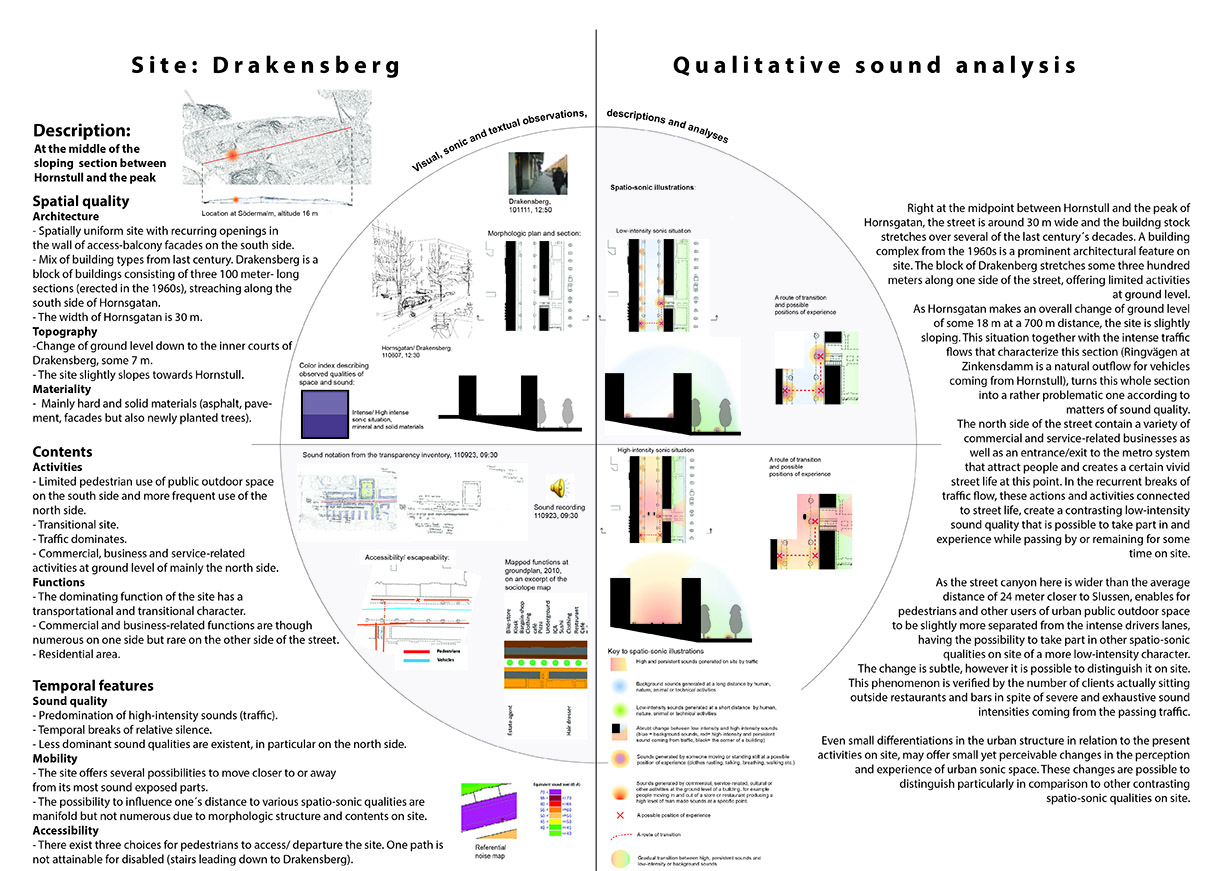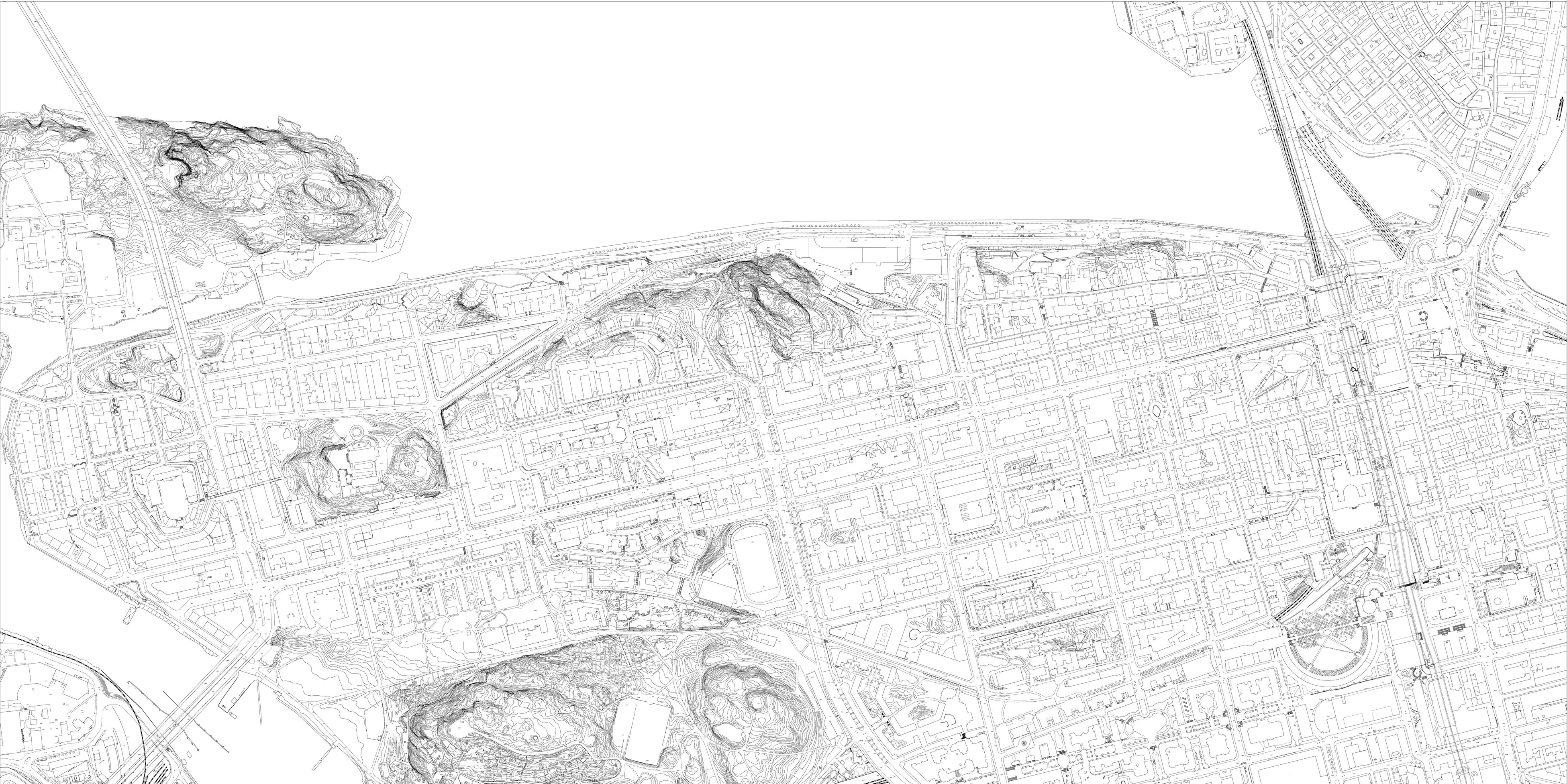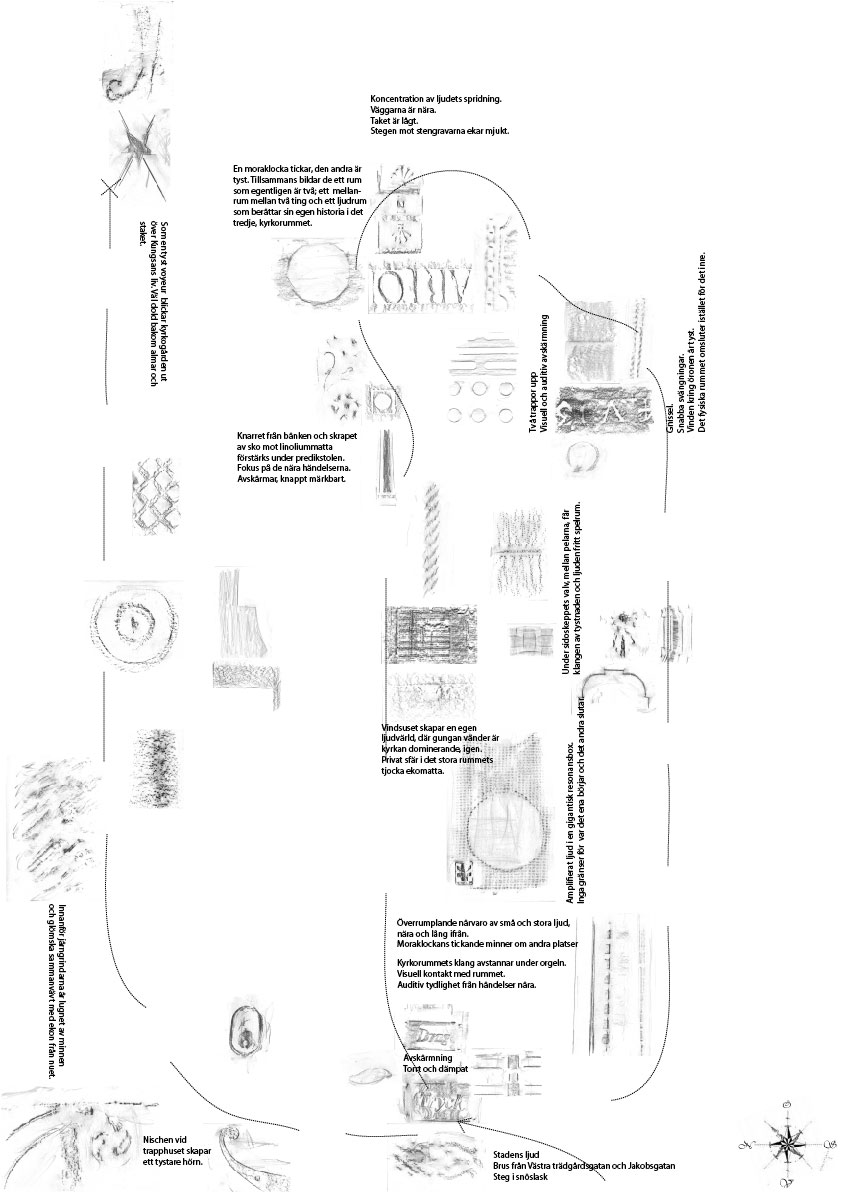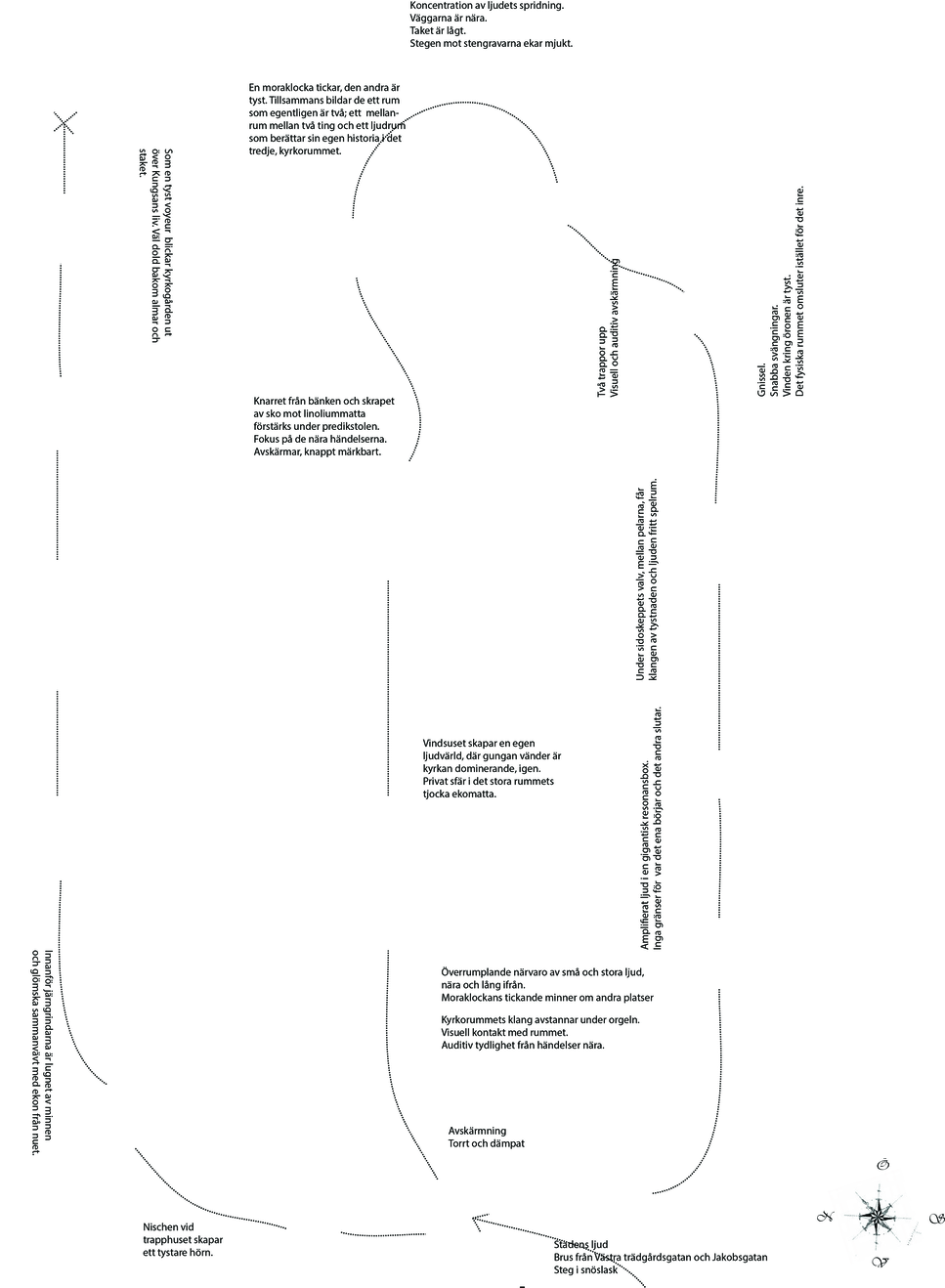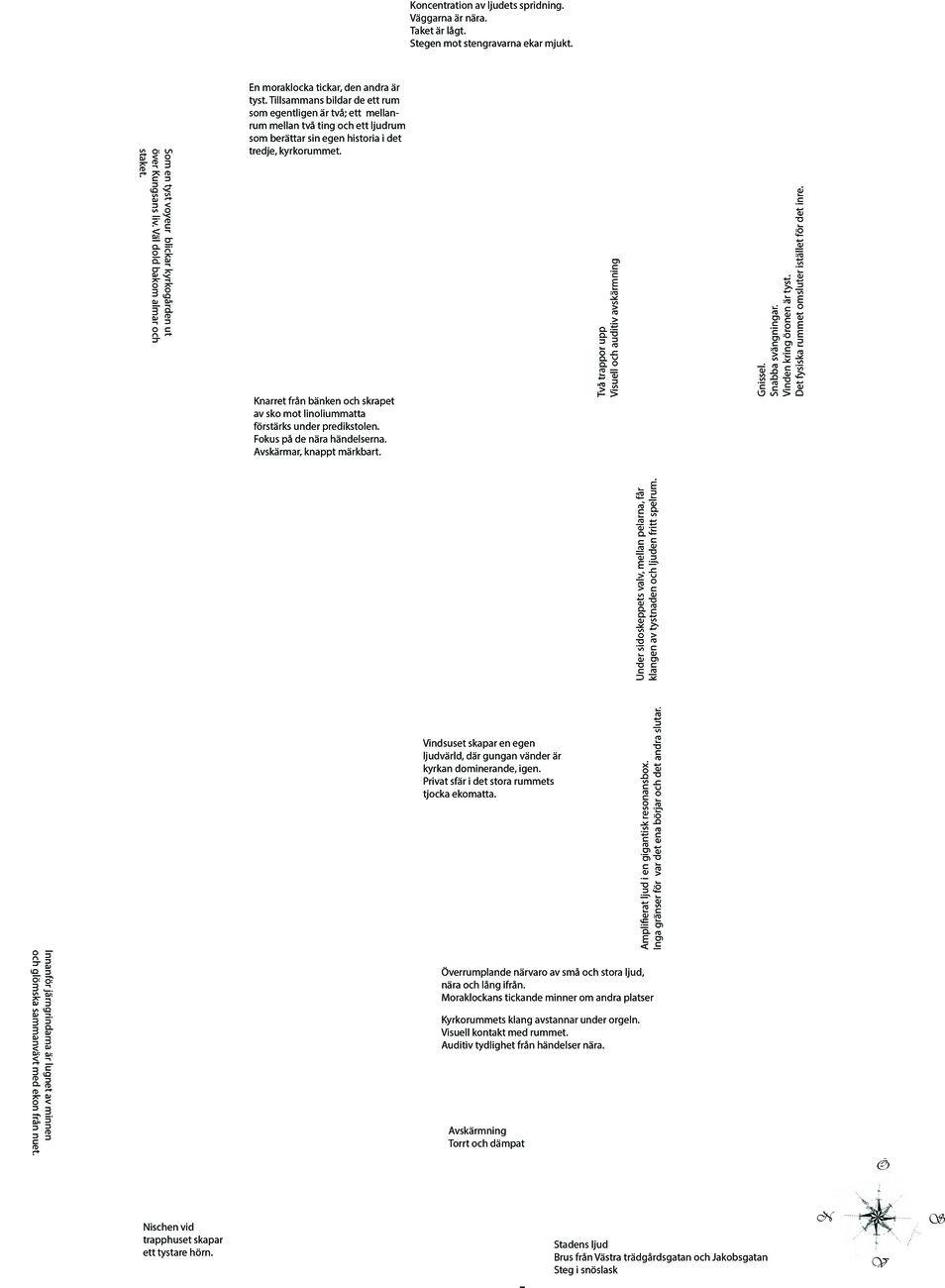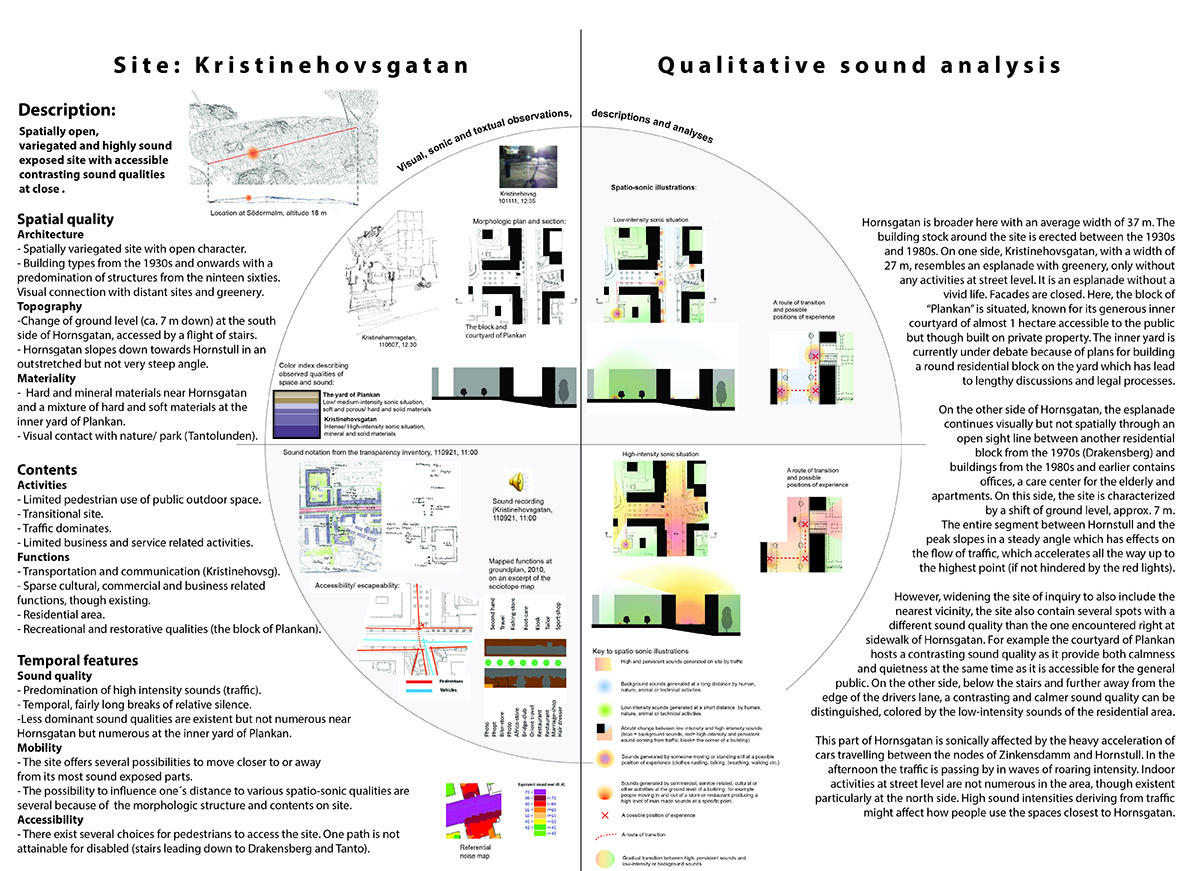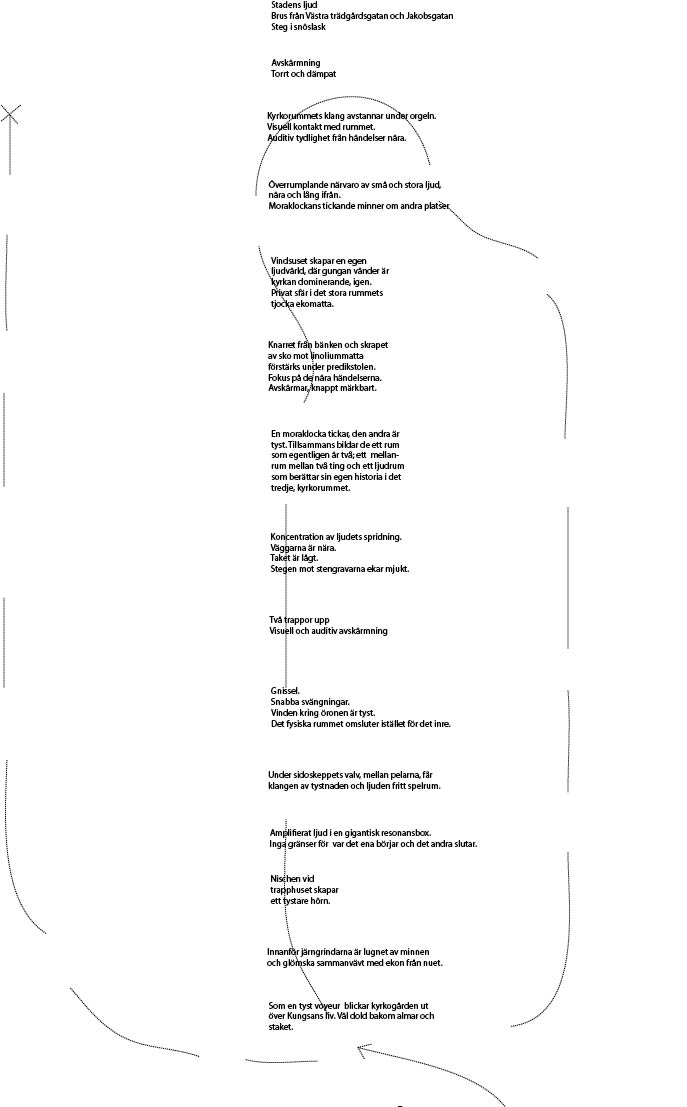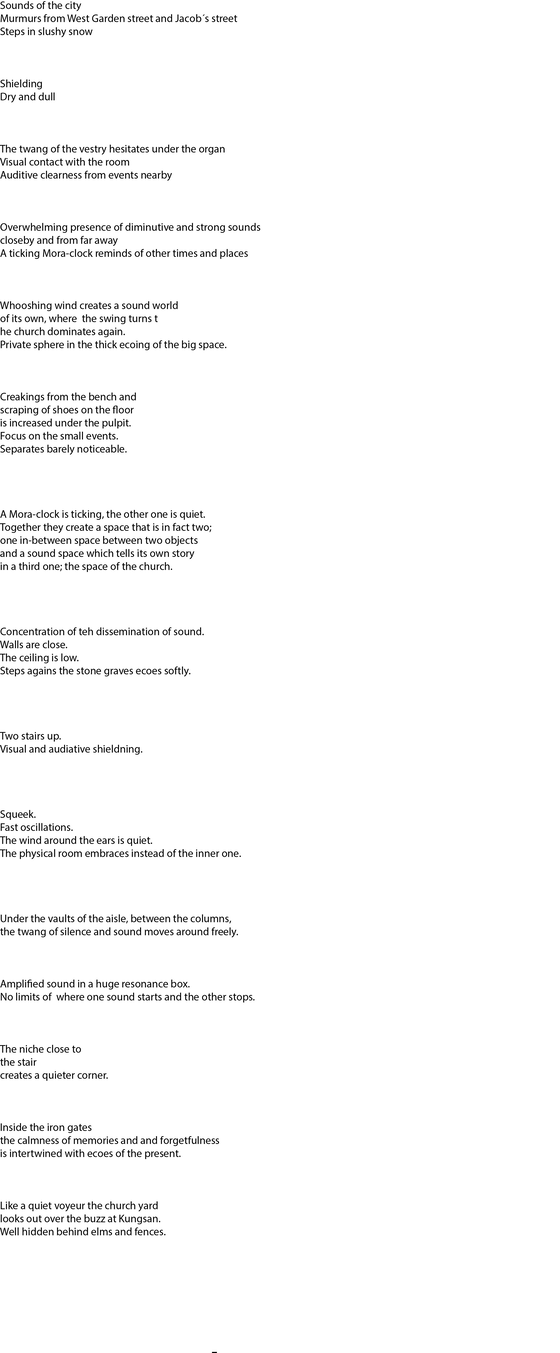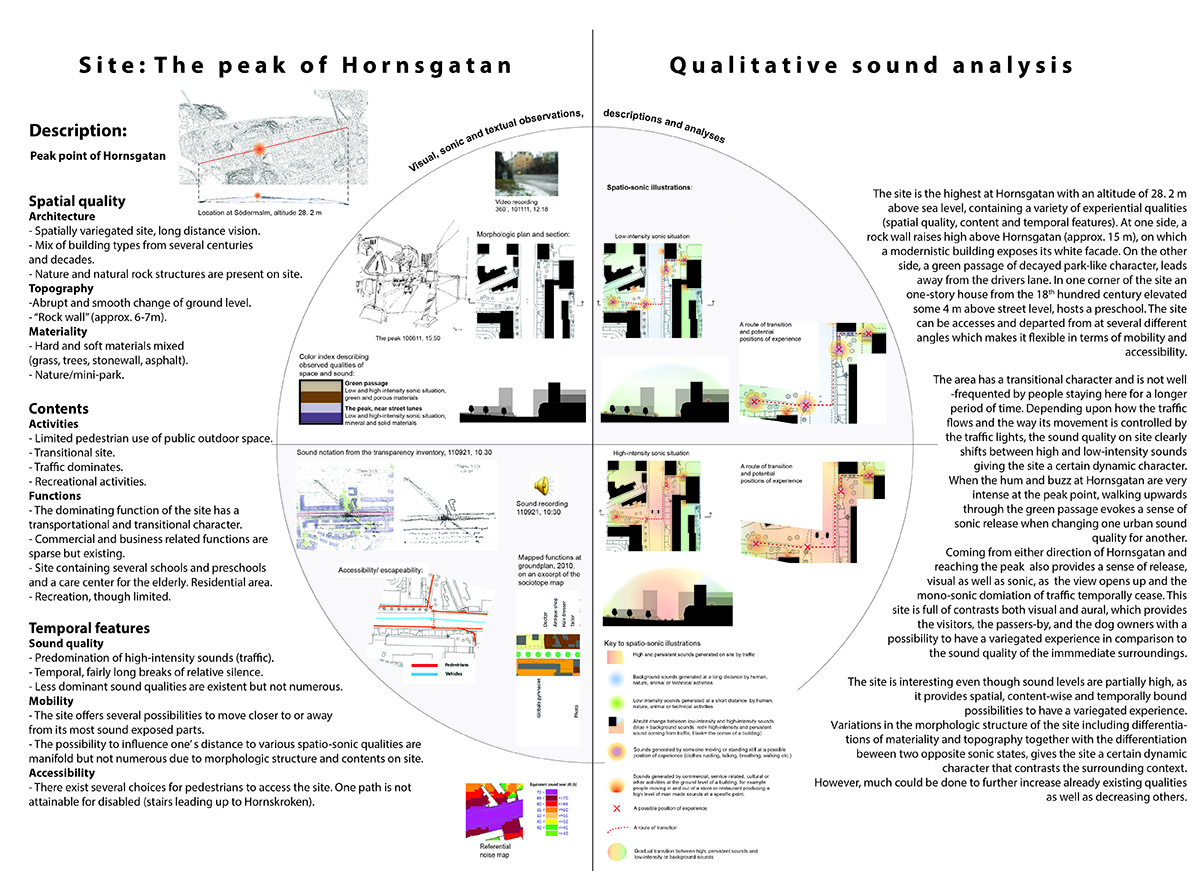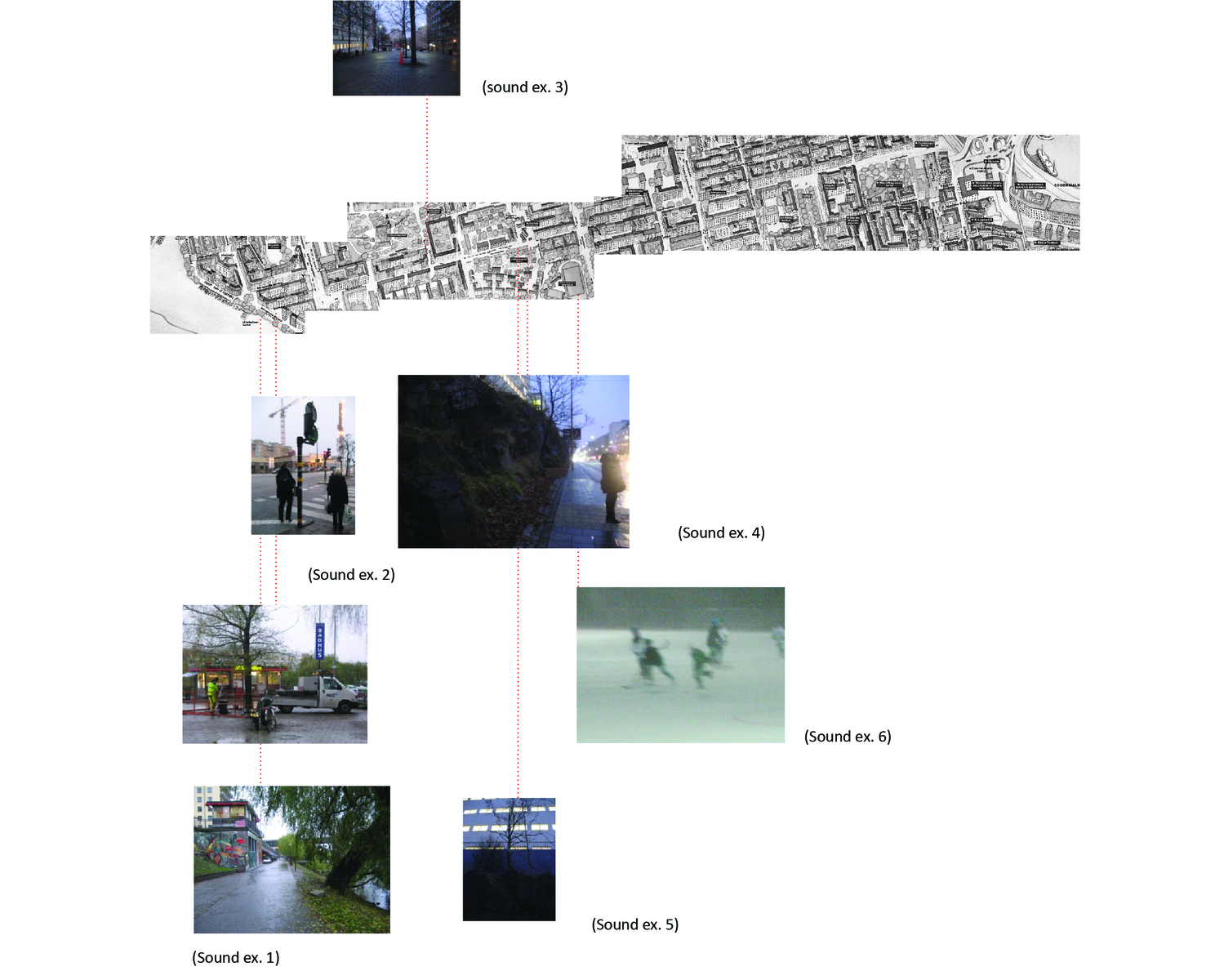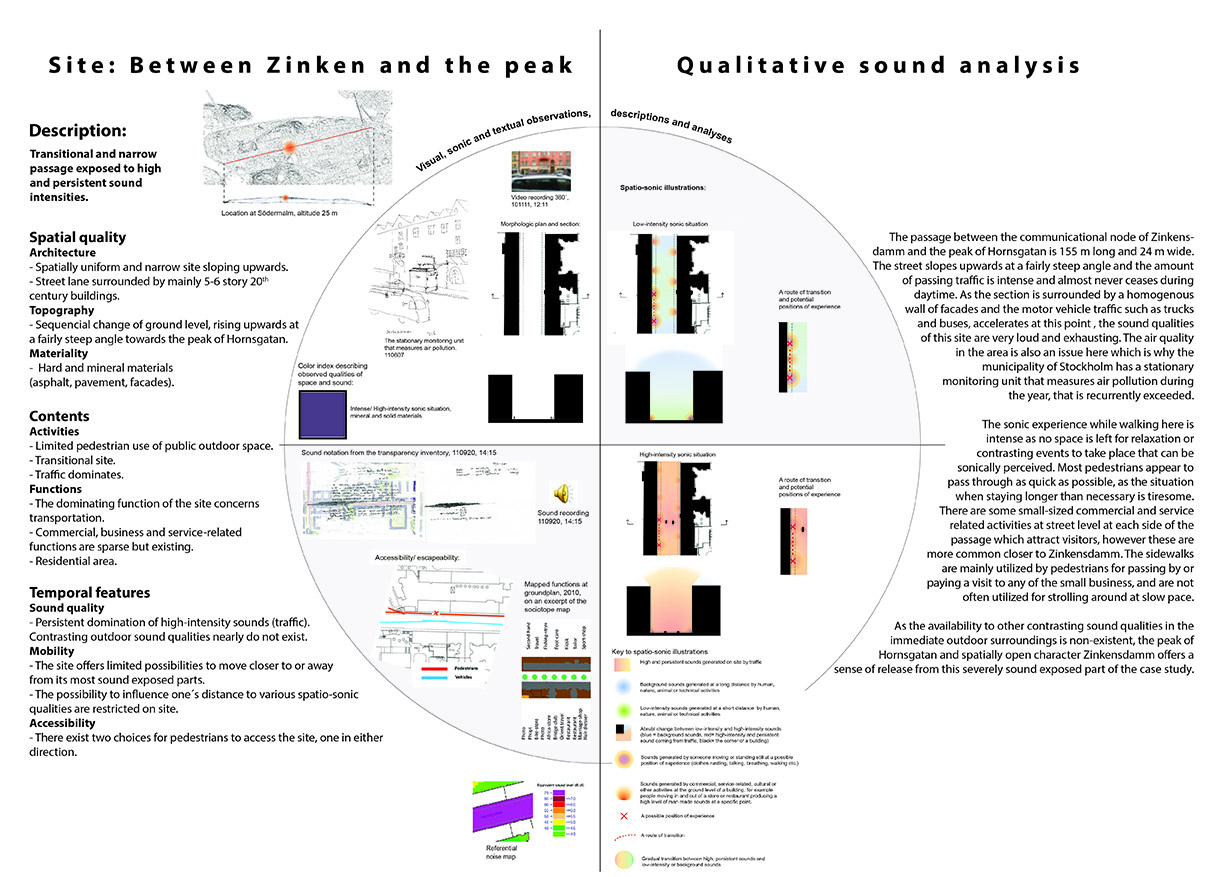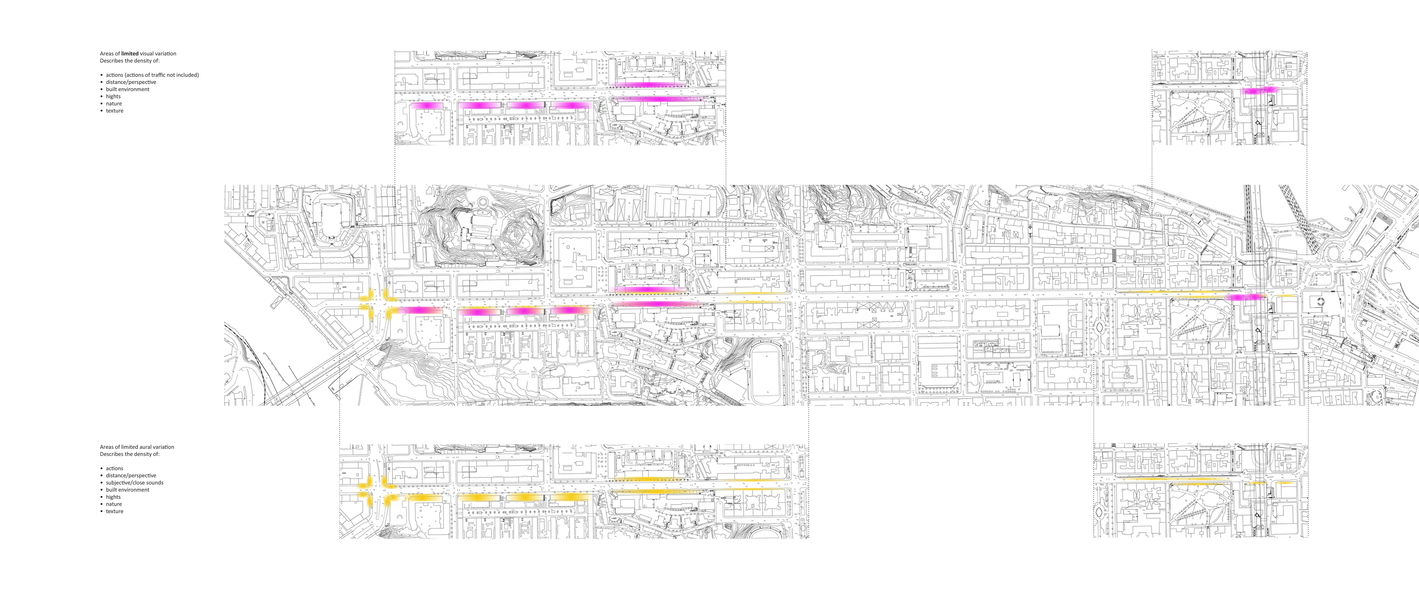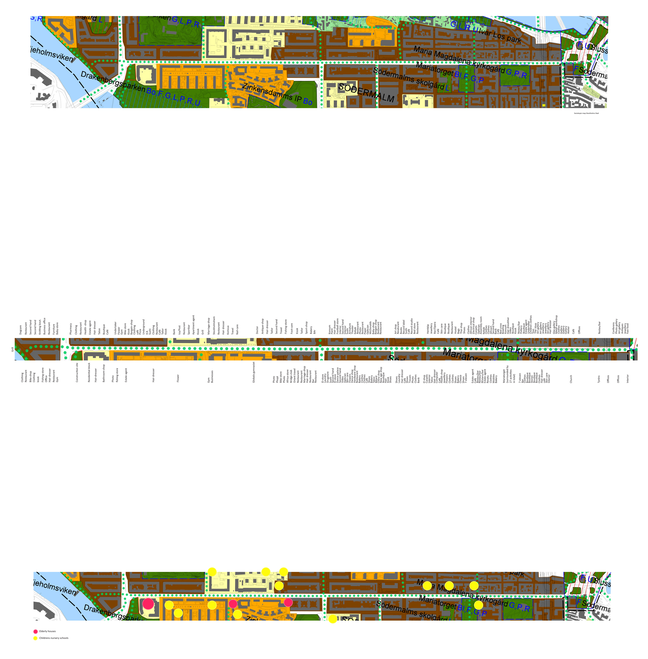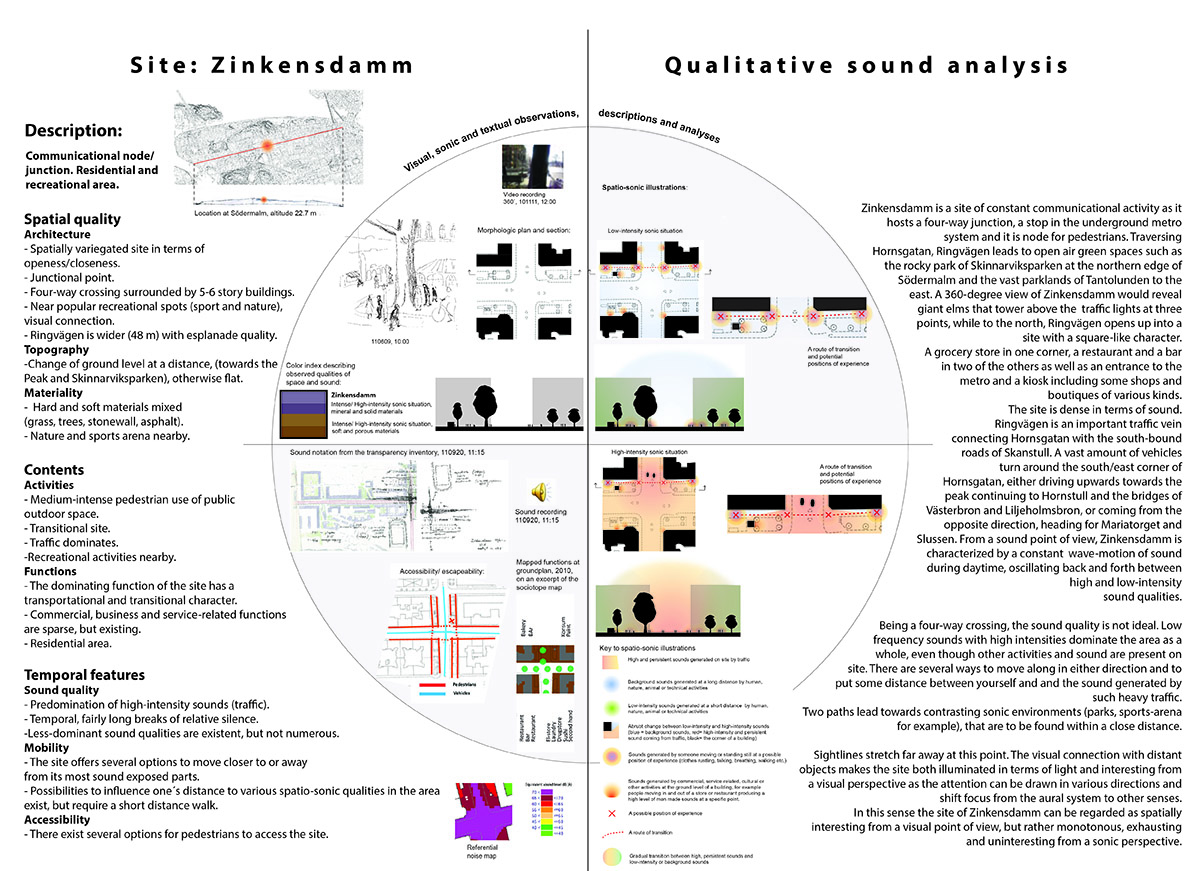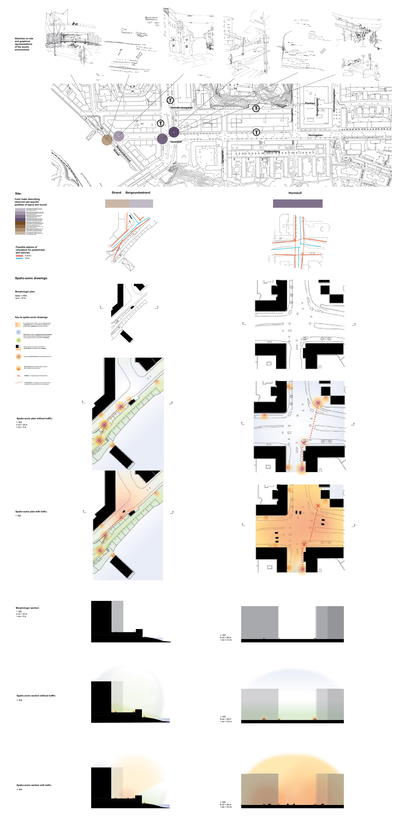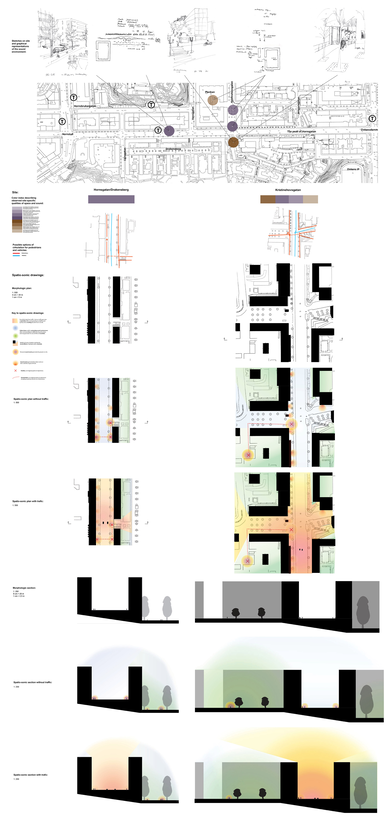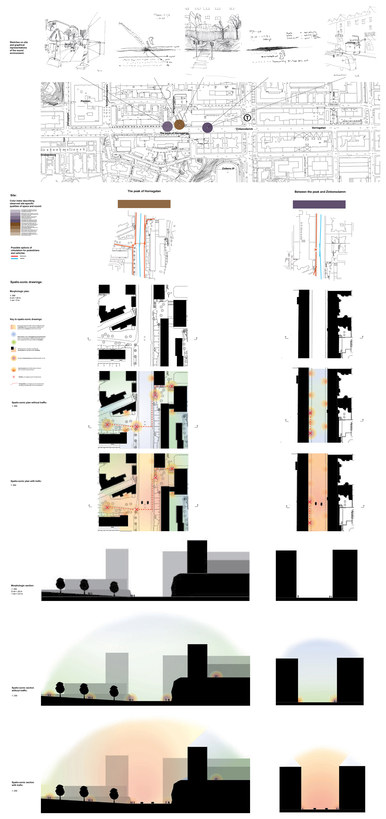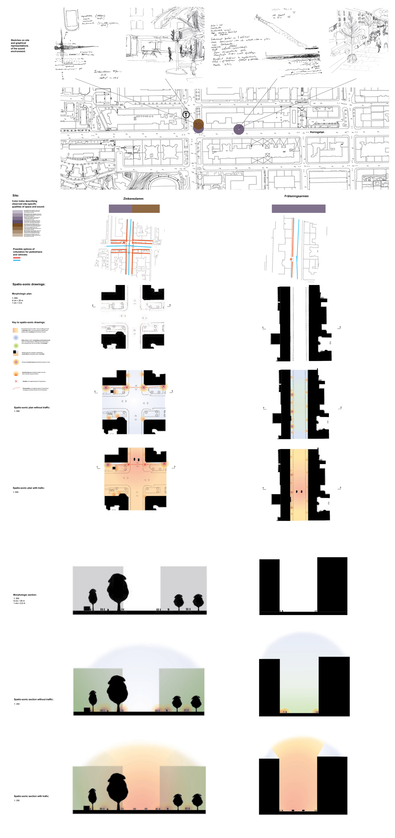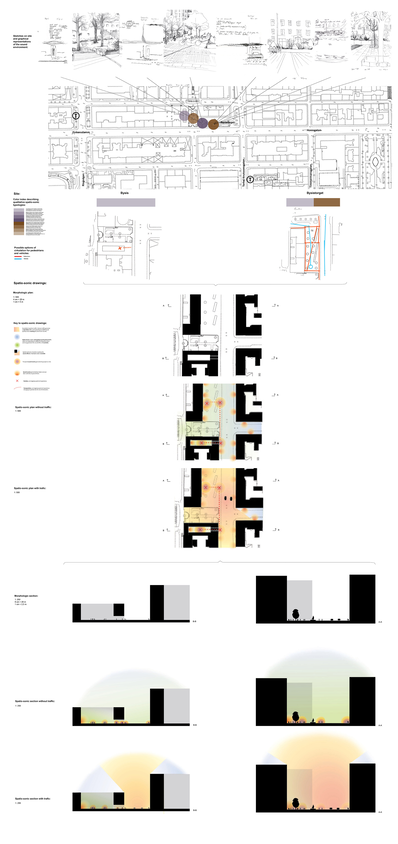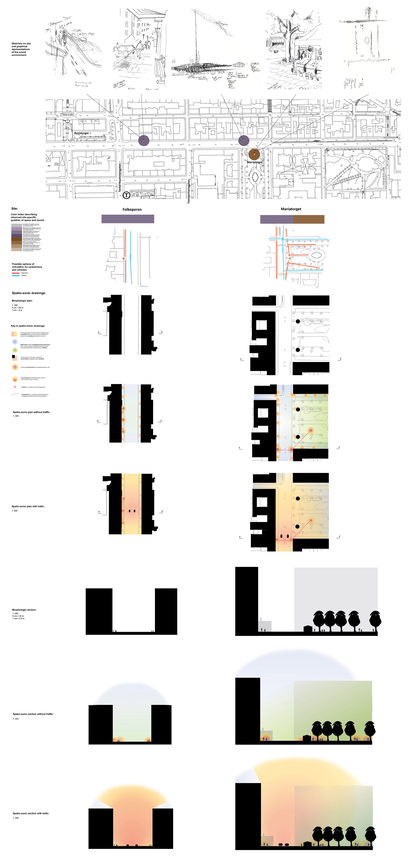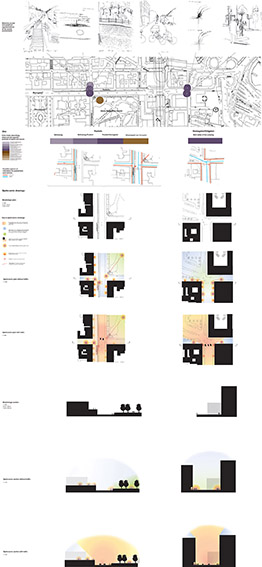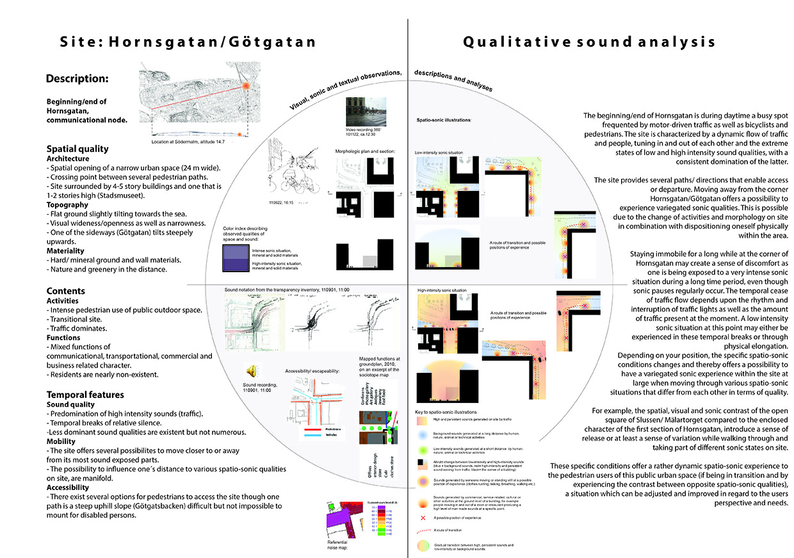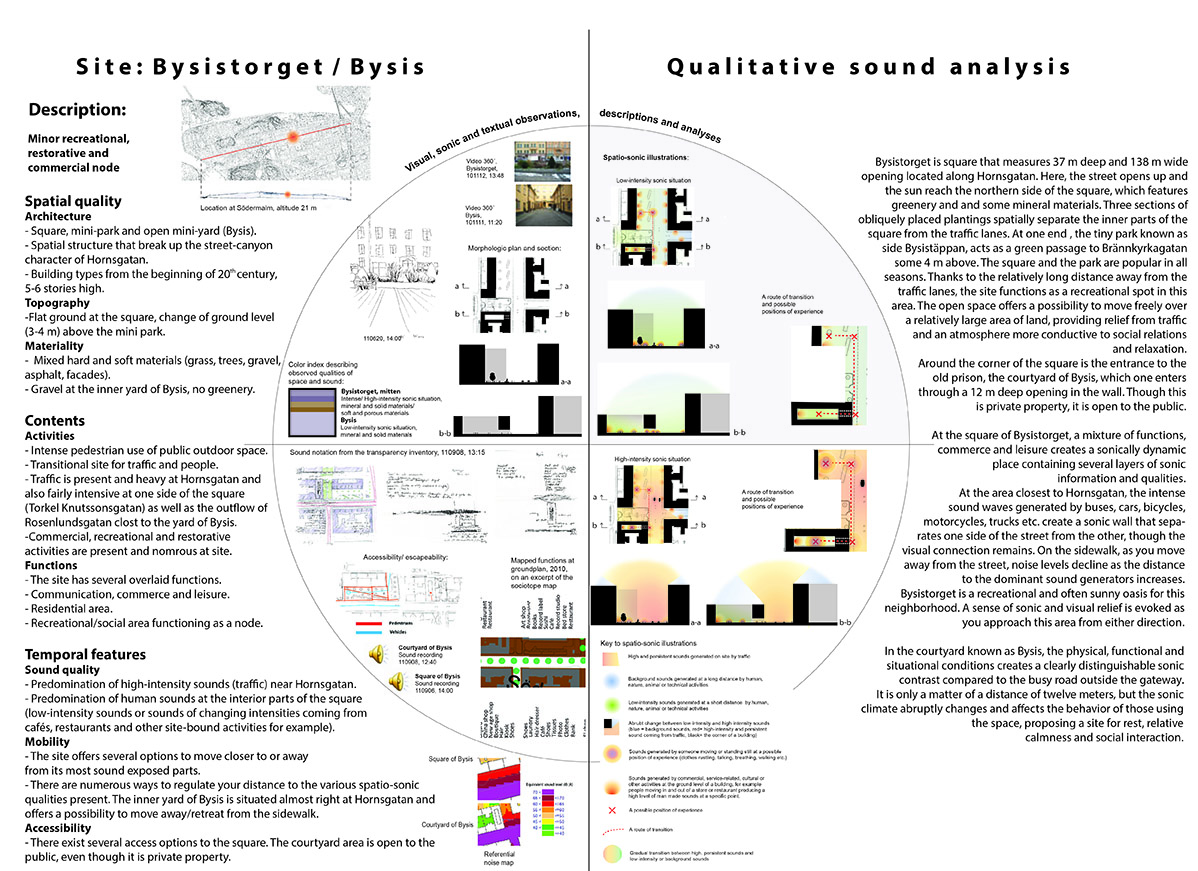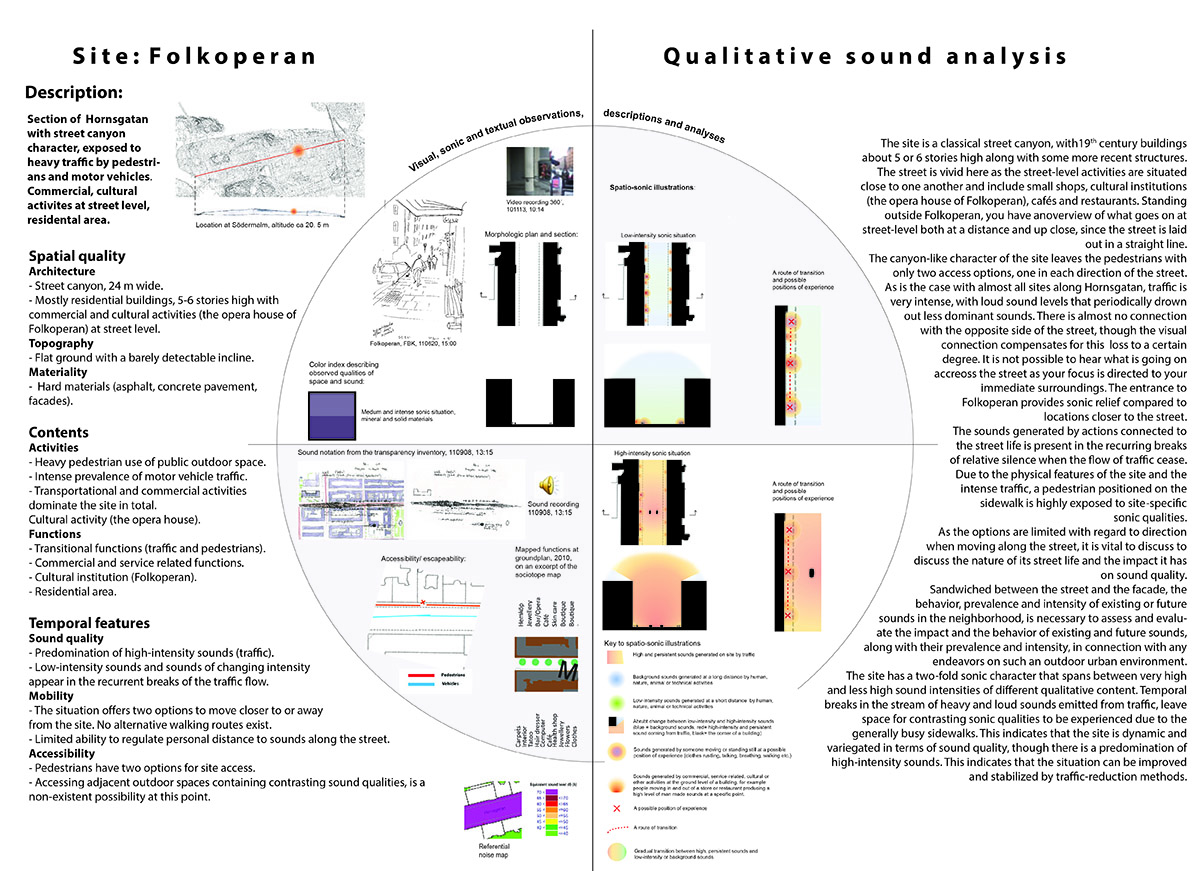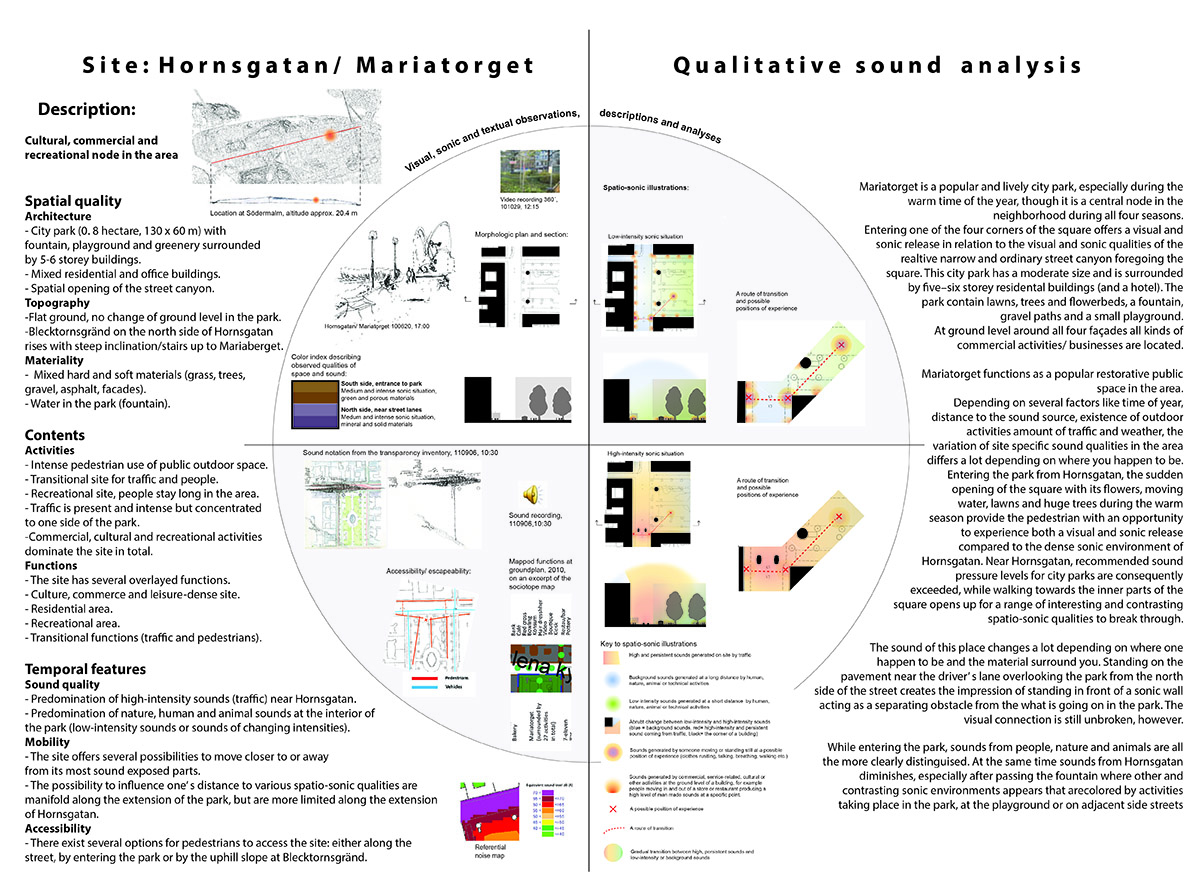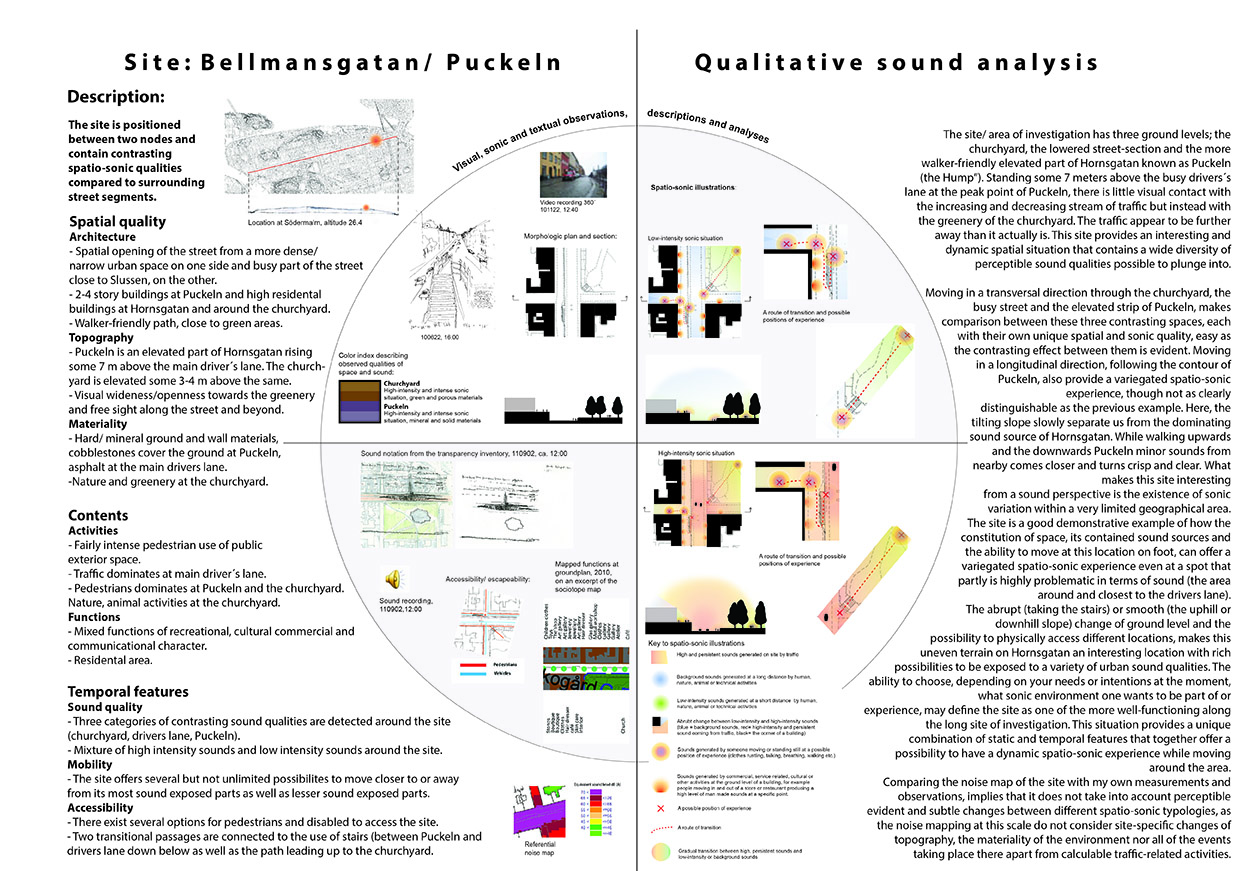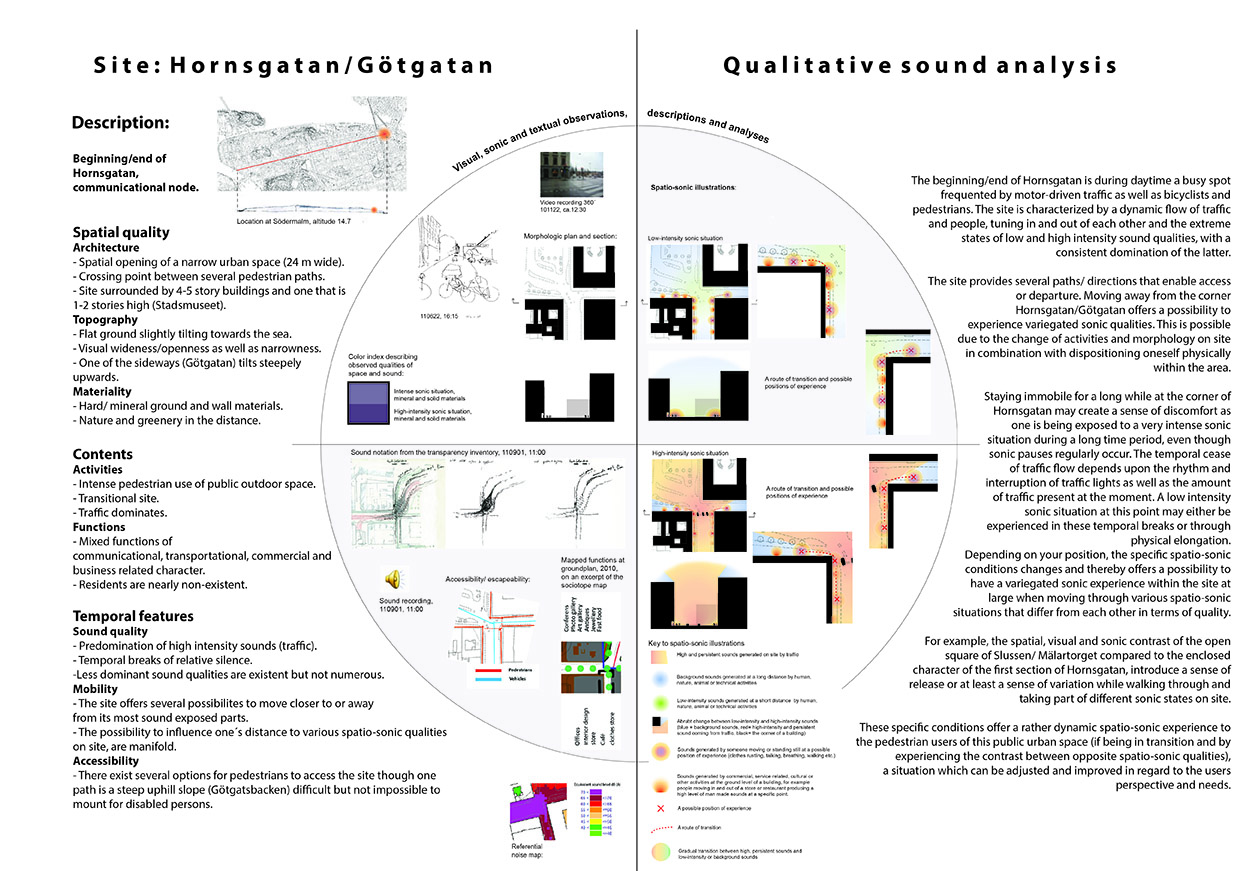3.2 A survey of applied tools, techniques and strategies
3.2.1 On and off-site studies
3.2.2 Survey of case study chronology and method development process
3.2.3 Static and motional explorations
3.2.4 Documentary sketches
3.2.5 Sound notation
3.2.6 Photo documentation
3.2.7 Video documentation
3.2.8 Verbalization and textual description
3.2.9 SWOT
3.2.10 Flows of traffic and people – accessibility and escapeability
3.2.11 Sound recordings
3.2.12 Waveforms – graphic illustrations of recorded sound
3.2.13 Sound measurements
3.2.14 Interactive sound map
3.2.15 Established qualitative sound concepts
3.2.16 The city map
3.2.17 The noise map
3.2.18 The sociotope map
3.2.19 Initial mappings
3.2.20 Location of indoor activities at ground level/ Location of child and elderly care
3.2.21 Color index describing observed qualities of space and soun
3.2.22 Morphologic maps
3.2.23 Basic acoustic principles
3.2.24 Spatio-sonic illustrations
3.3 Archiving
4. IMPLEMENTATION
4.1 Section one
4.2 Section two
4.3 Section three
4.4 Summarizing analysis of Hornsgatan
5. SYNTHESIS: Conclusion and future development
Appendix
Bibliography
1. POINT OF DEPARTURE
1.1 Introduction
1.1.1 Topic of inquiry
1.1.2 Current situation
1.1.3 Hypothesis and research query
1.1.4 Intersecting disciplinary fields and practices
1.2 Site-specific explorations
1.2.1 Limitations of the study
1.2.2 Mixed methods and architectural thinking
1.2.3 Art-based research
1.3 Overview
2. EXPLORING THE FIELD
2.1 Site-specific
2.1.1 First excursion
2.1.2 Second excursion
2.1.3 Third excursion
2.1.4 Concluding reflection
2.2 Sound
2.2.1 The phenomenon
2.2.2 Moving through urban sonic space
2.2.3 Active conditional agents
2.3 The field
2.3.1 Two complementary approaches to urban sound research and practice
2.3.2 International guidelines and dominating concepts
2.3.3 Hegemony of measures and numbers
2.3.4 The noise map
2.3.5 Urban sound quality?
2.3.6 The need for communicative methods
3. THE CASE OF HORNSGATAN:
METHODS FOR QUALITATIVE SOUND ANALYSIS
3.1 Introduction to the case study
3.1.1 Why Hornsgatan?
3.1.2 Historical background, location and function
A b s t r a c t
The licentiate thesis Designing with Urban Sound explores the constitution and qualitative characteristics of urban sonic space from a design-oriented and practice-based perspective. The act of lifting forth and illuminating the interaction between architecture, the creation of sound and a sonic experience aims to examine and develop useful tools and methods for the representation, communication and analysis of the exterior sonic environment in complex architectural spaces. The objective is to generate theoretical and practical knowledge within the field of urban sound planning and design by showing examples of different and complementary ways of communicating and analyzing sound than those which are commonly recognized.
Sound in the city is an intricate phenomenon that affects us at several levels, both health-wise and socially. At the same time, sound has cultural and functional implications by mediating important information connected to identity, security and spatial orientation. Unfortunately, current quantitative methods are not sufficient for describing, analyzing and managing urban sounds in regard to this complexity. Complementary methods of representation and analysis need to be developed that will bring out important information - gathering it and making it visual - about the constitution, character and quality of urban sonic space that is possible to utilize alongside today’s calculation and measurement-based methods within such areas as architecture and urban planning practices.
The licentiate thesis has its foundation in the analogue and well-recognized tool-box of the architect, such as various forms of documentation and sketching techniques, mapping, inventory and site-analysis, etc., when exploring tools and strategies for the communication and analysis of the exterior urban sound environment along the long and busy street Hornsgatan in Stockholm.
In addition to exploring various methods for capturing and describing the qualitative constitution of the exterior sonic environment and some of the basic factors affecting it, this thesis sets forth a general model for qualitative sound analysis of a problematic, yet well-utilized, urban sonic space.
The licentiate thesis exists as both a print and a digital version that complement each other and thus should be read, listened to and scrutinized in parallel. In the digital version found at https://www.researchcatalogue.net/view/264750/264751, all visual and aural material that was crucial to method development is included. It is possible to zoom in and move through all the visual and textual material that constitutes the thesis at this site that cannot be presented here, due to spatial and technical issues, in its entirety.
